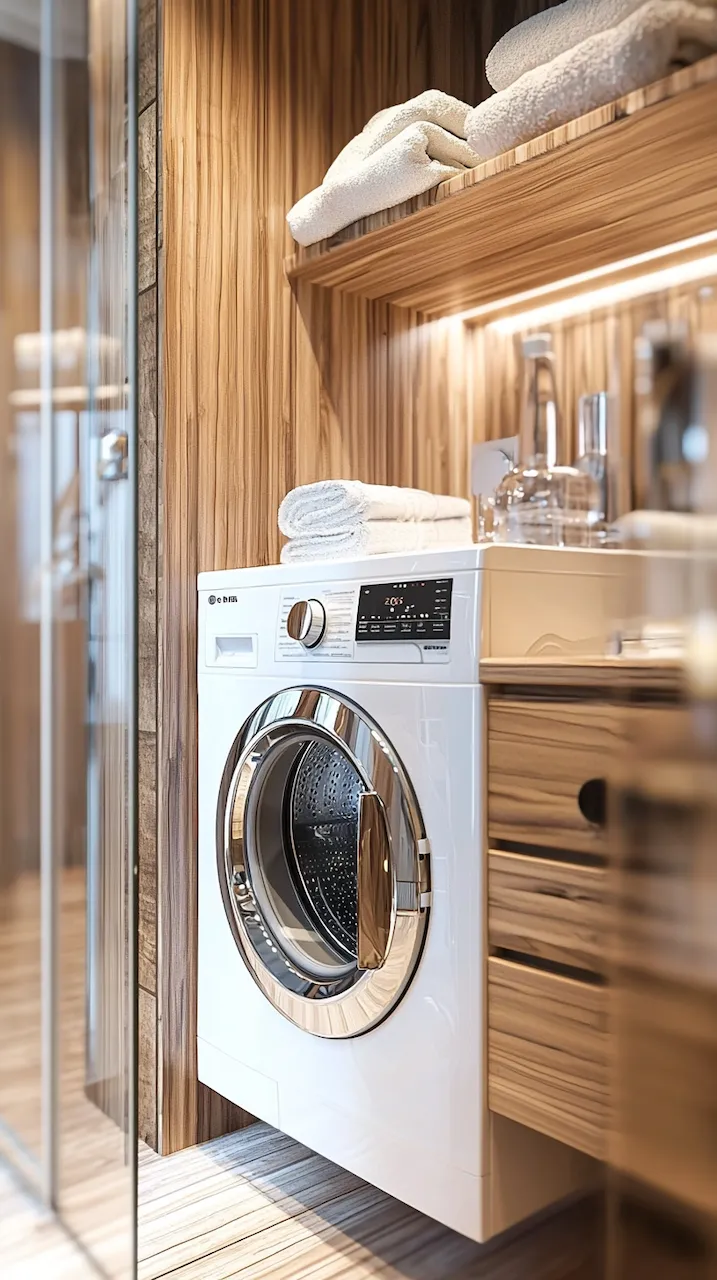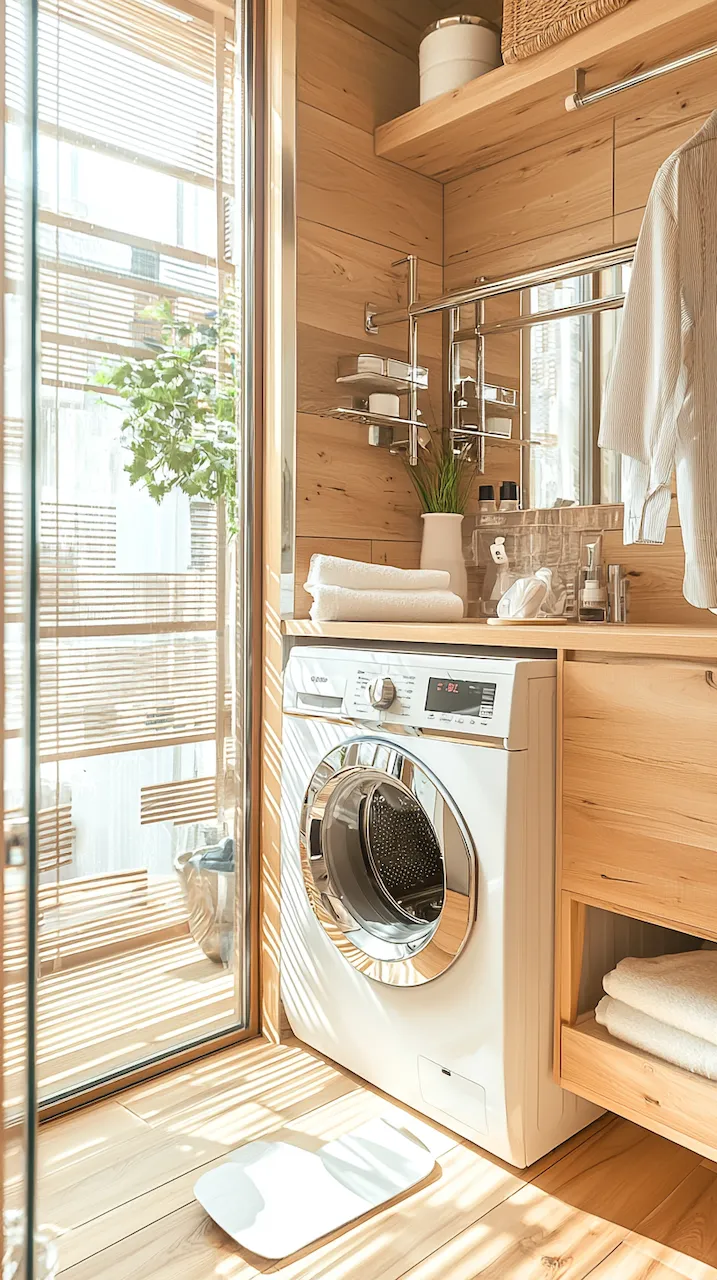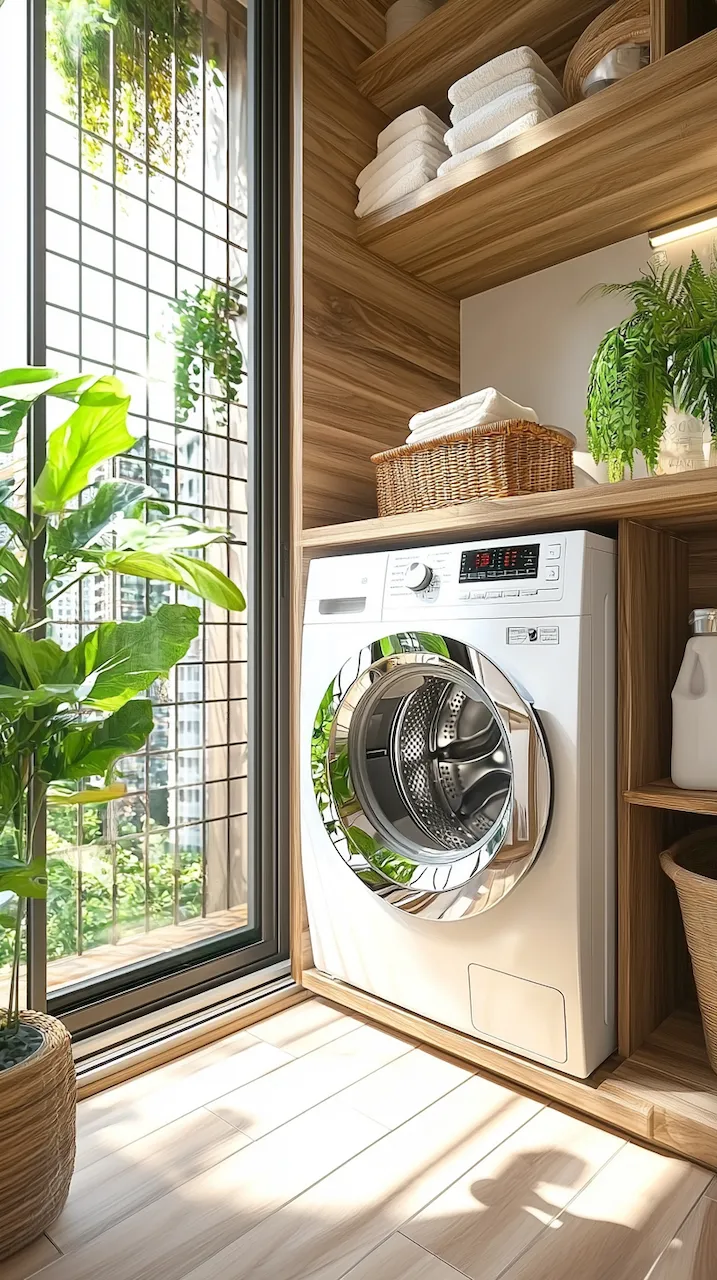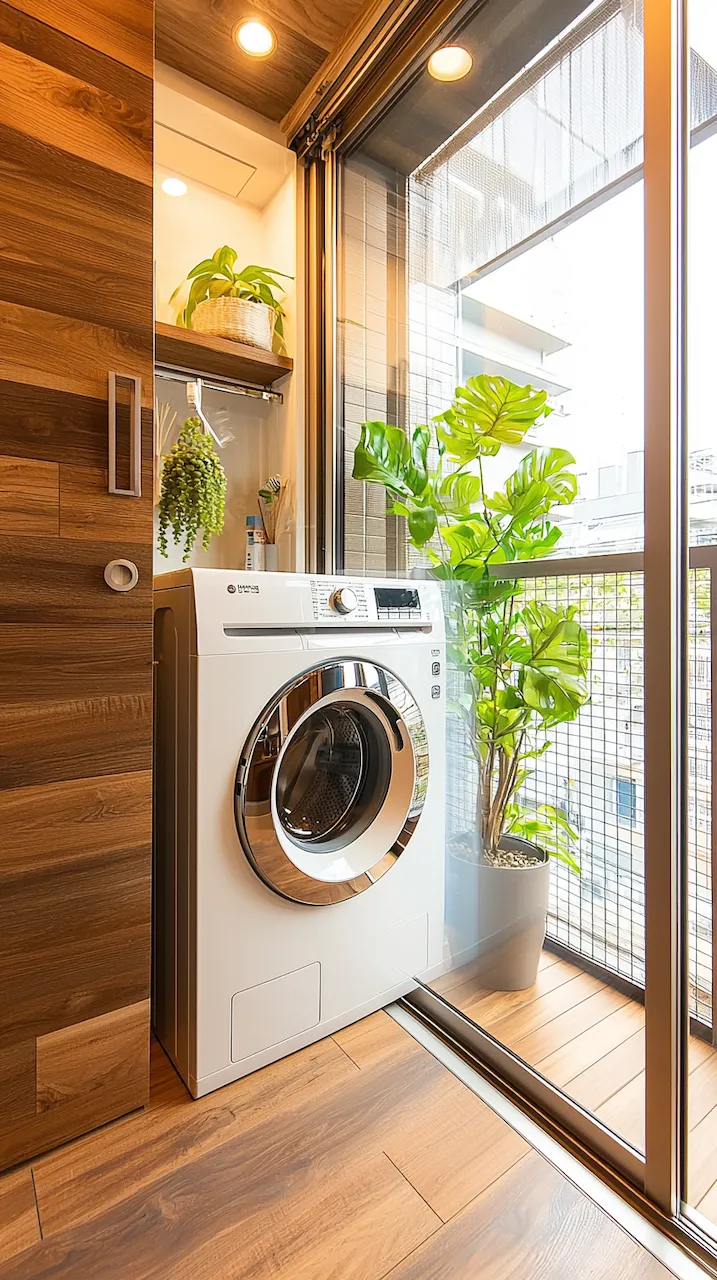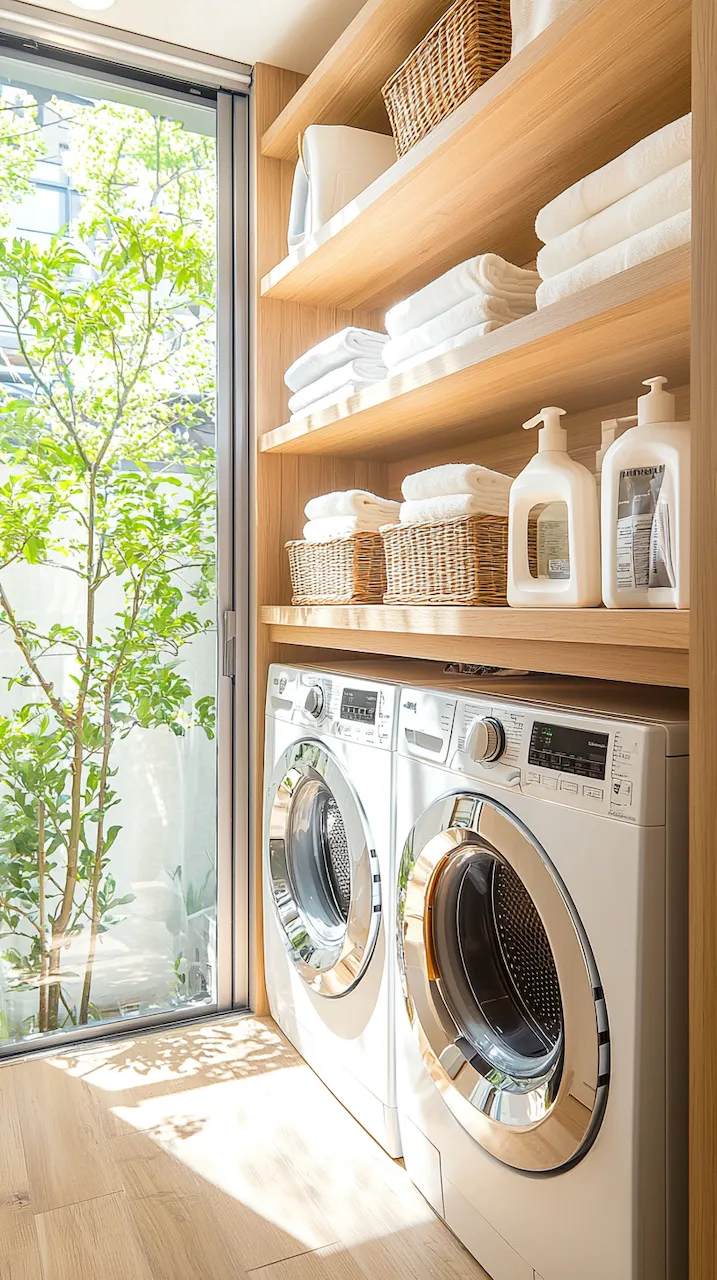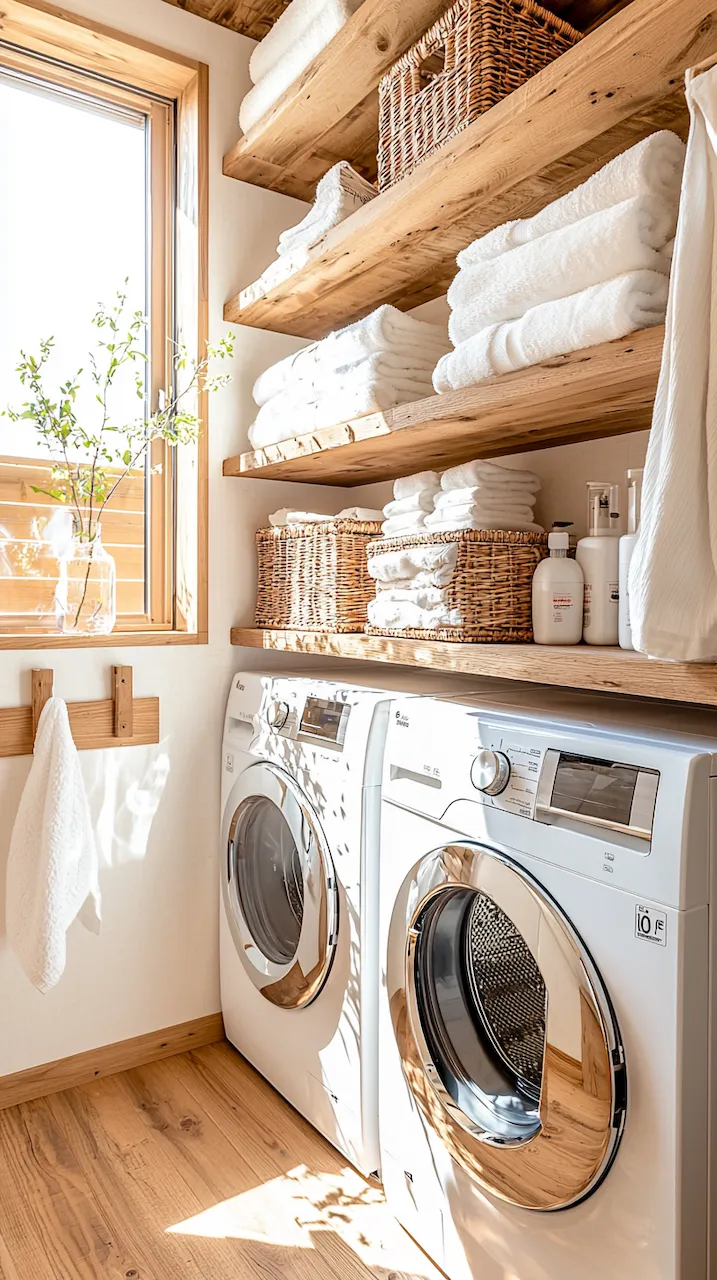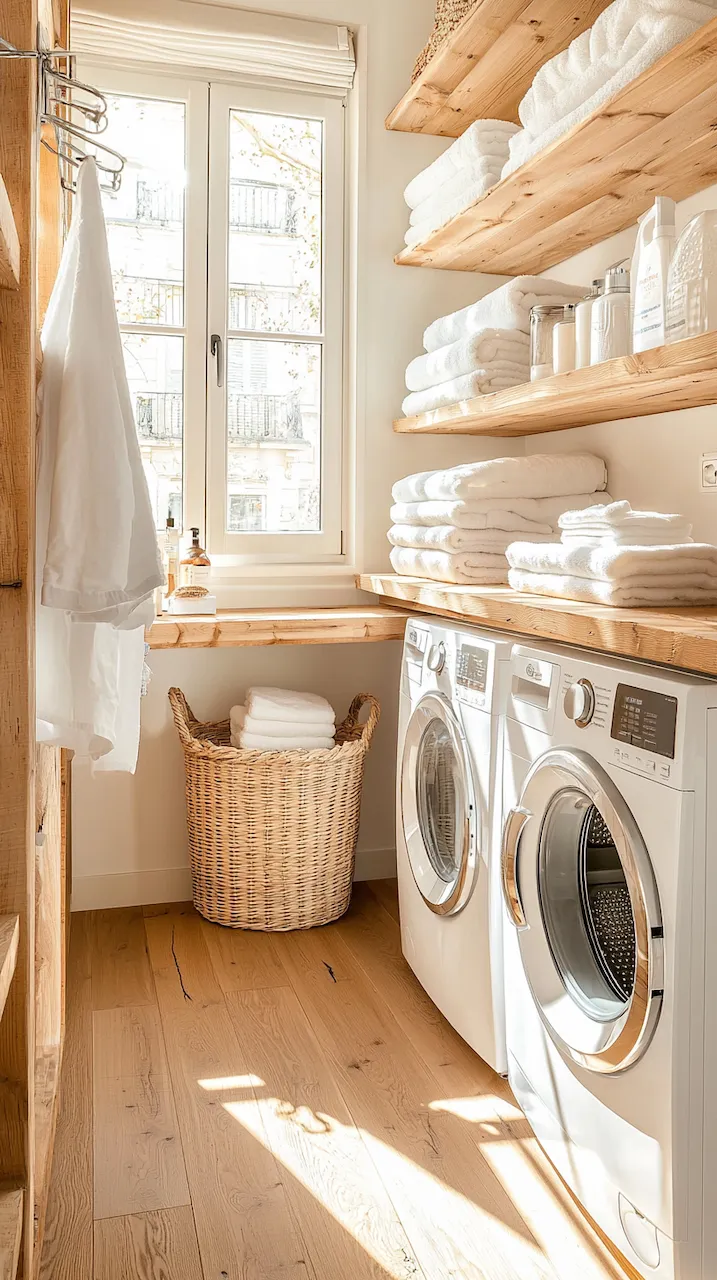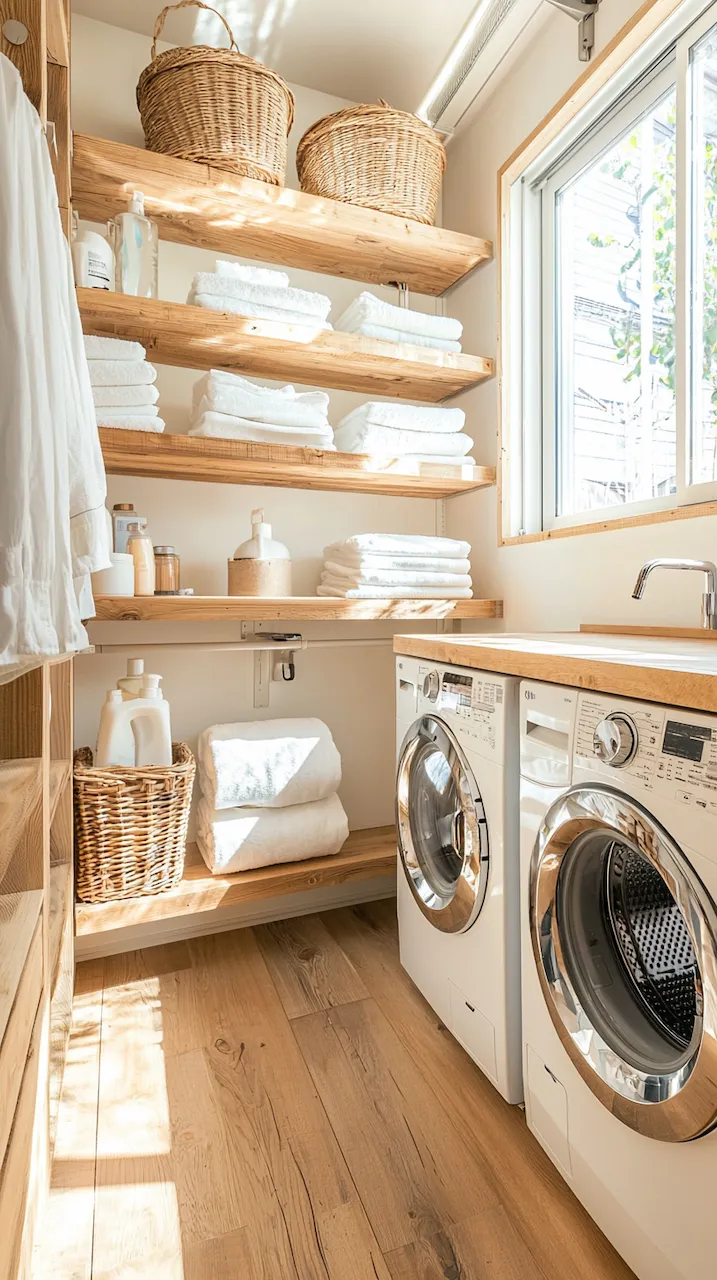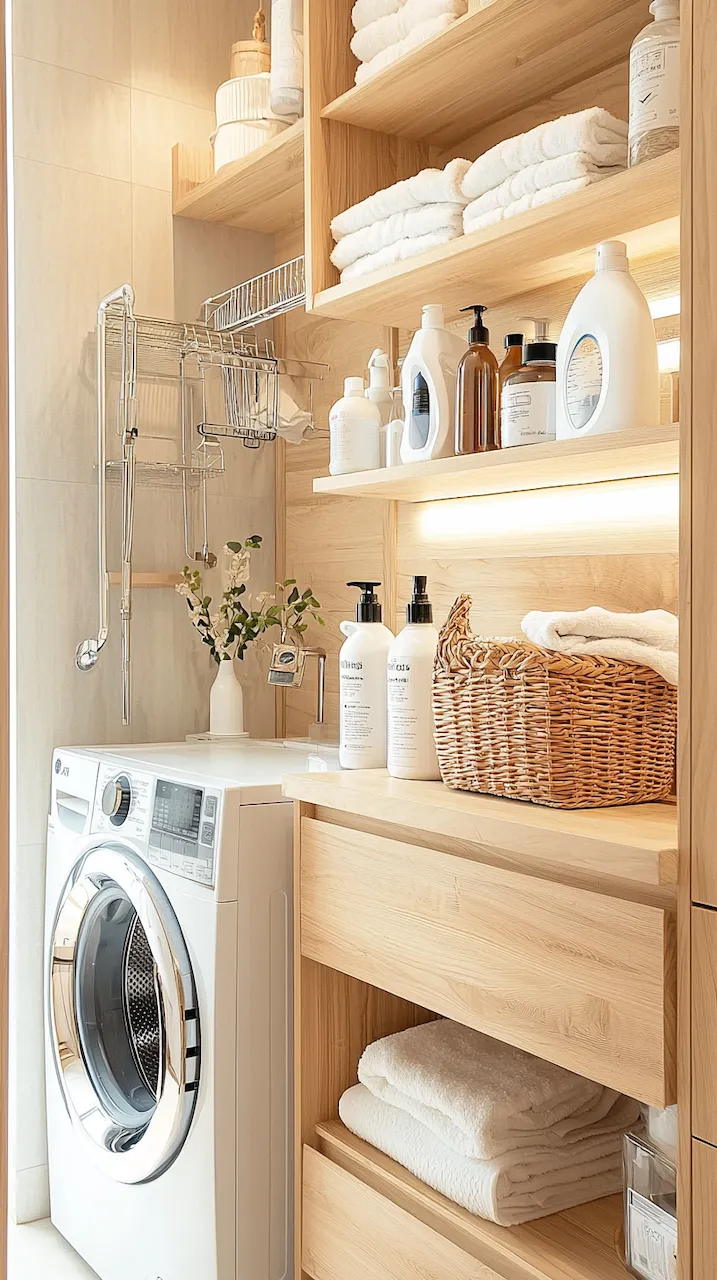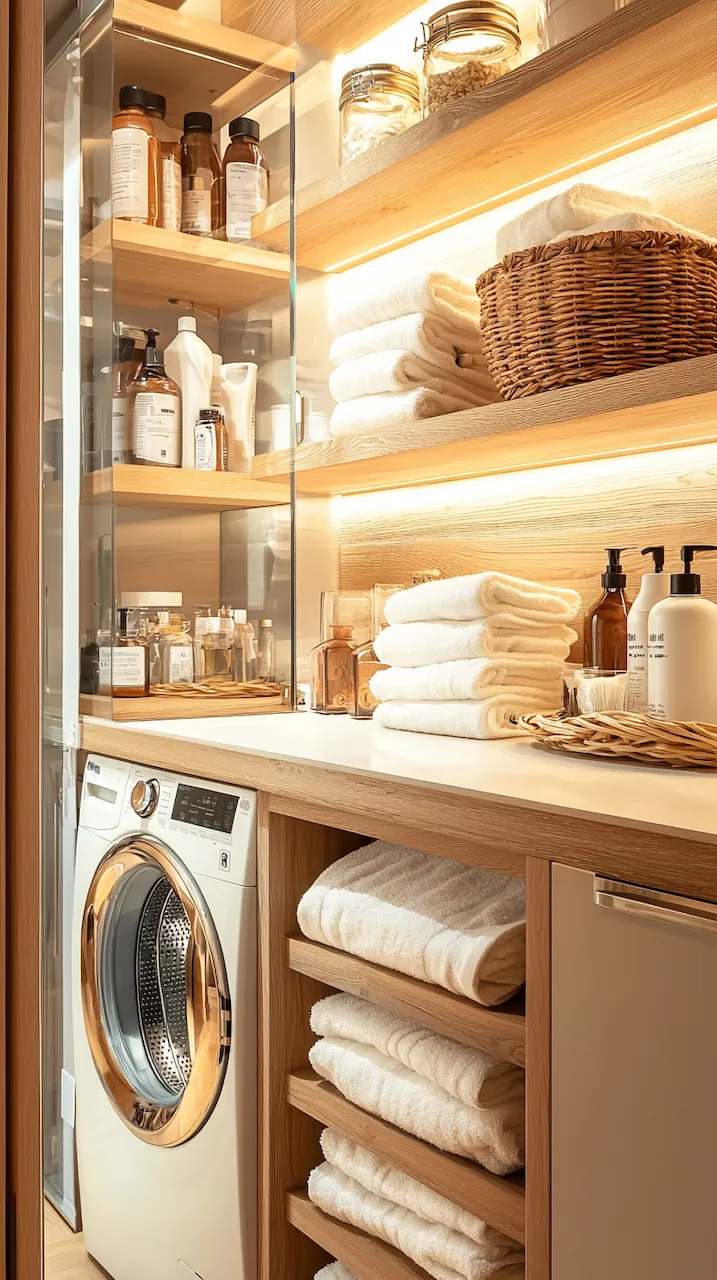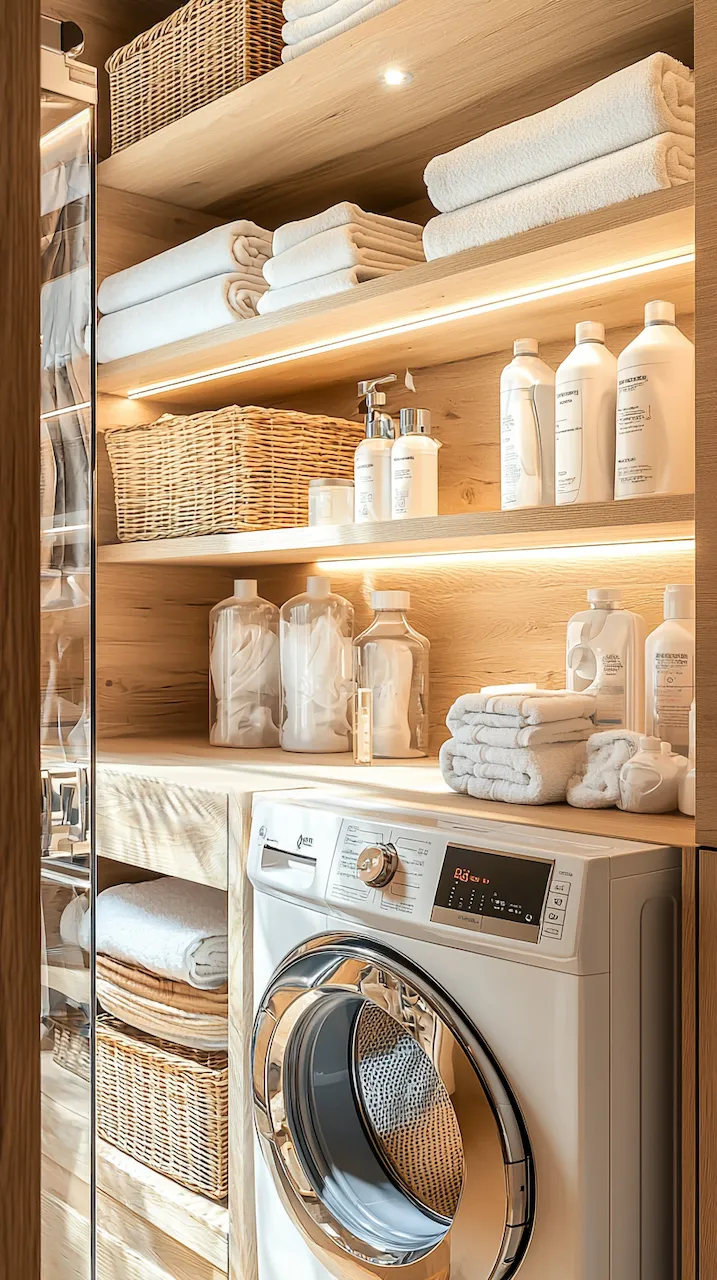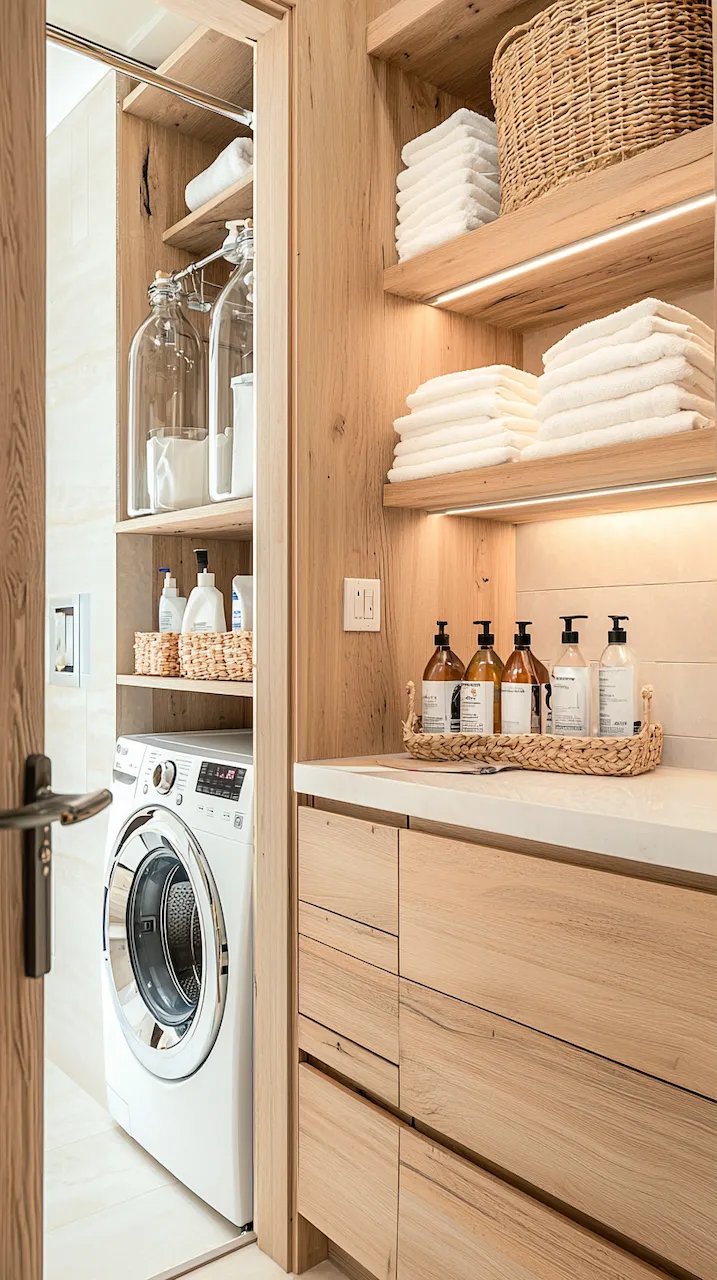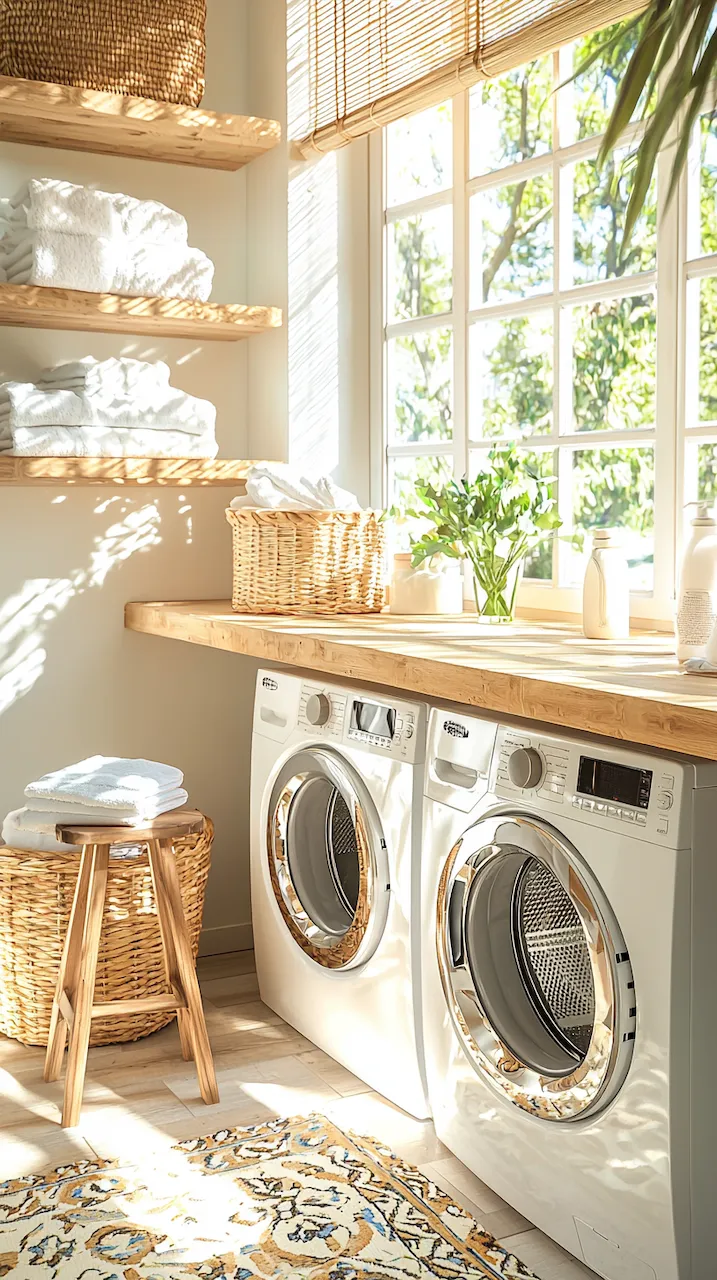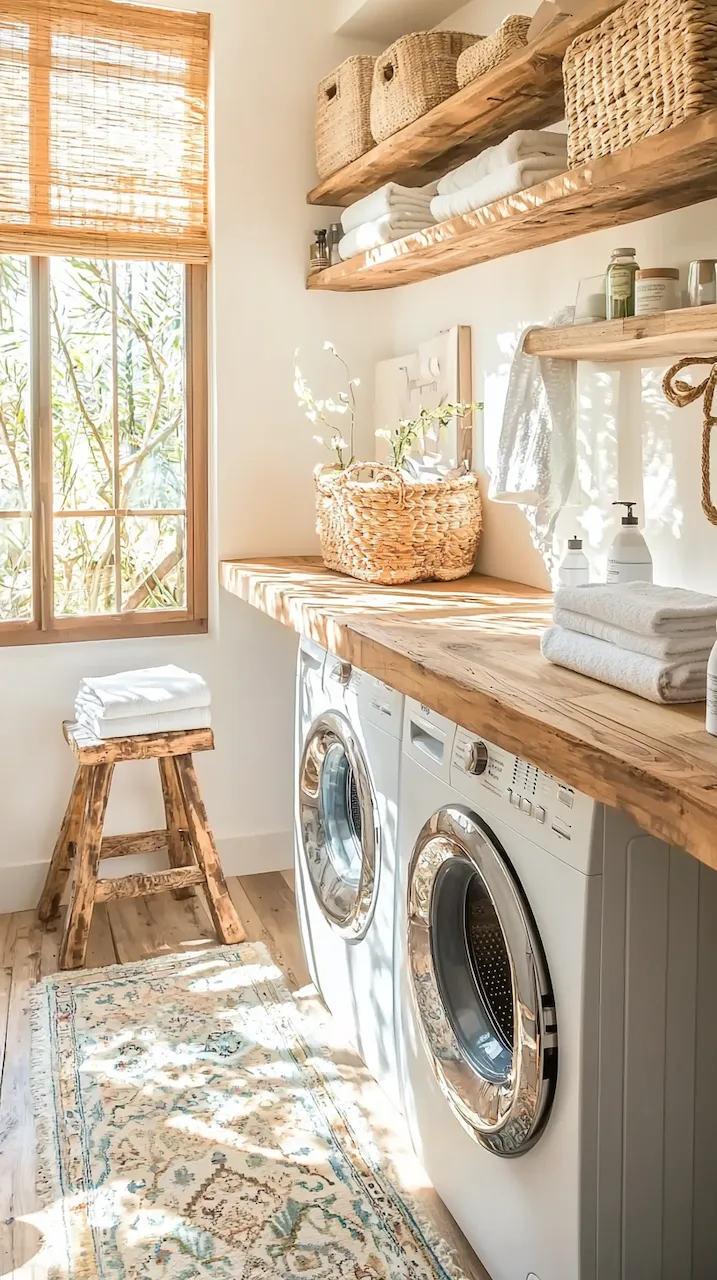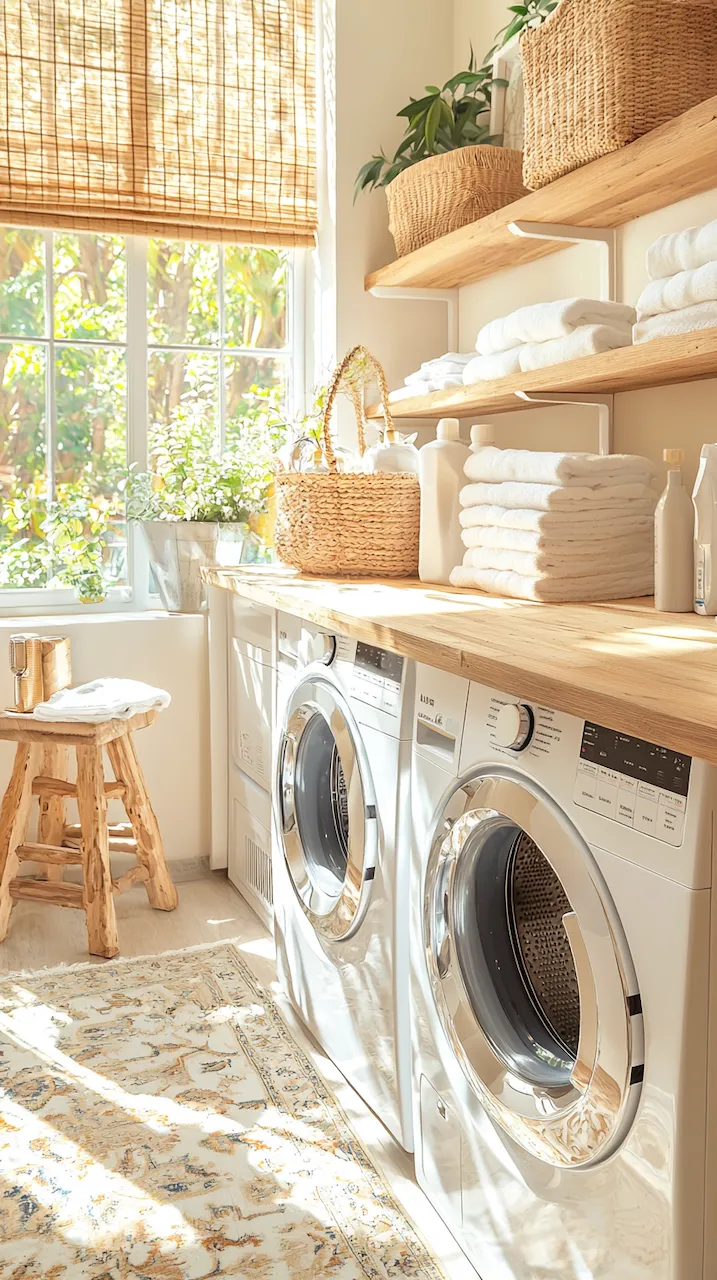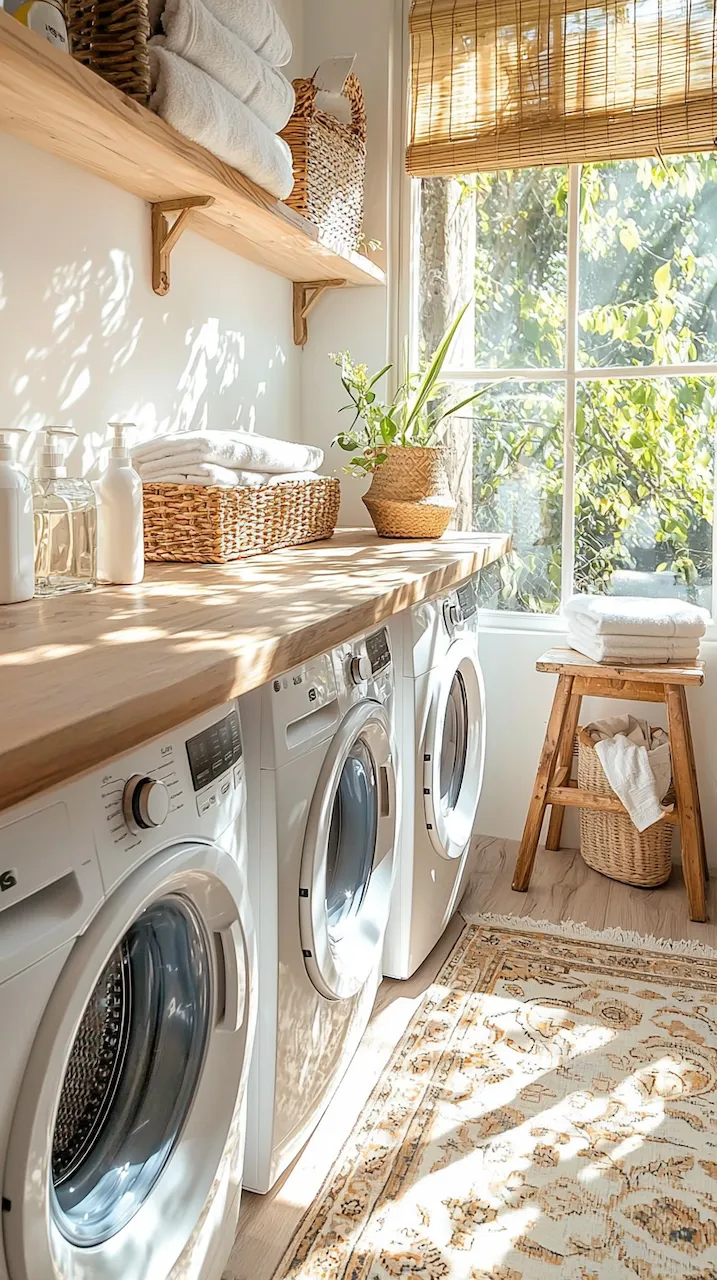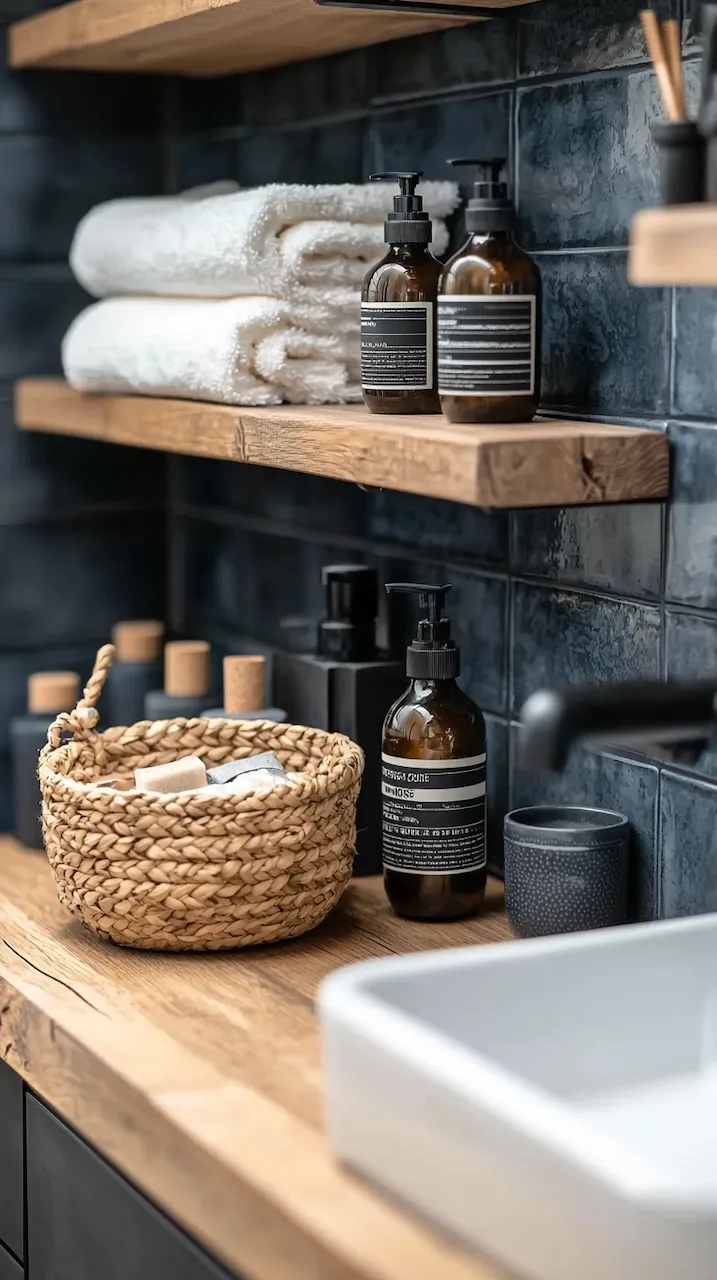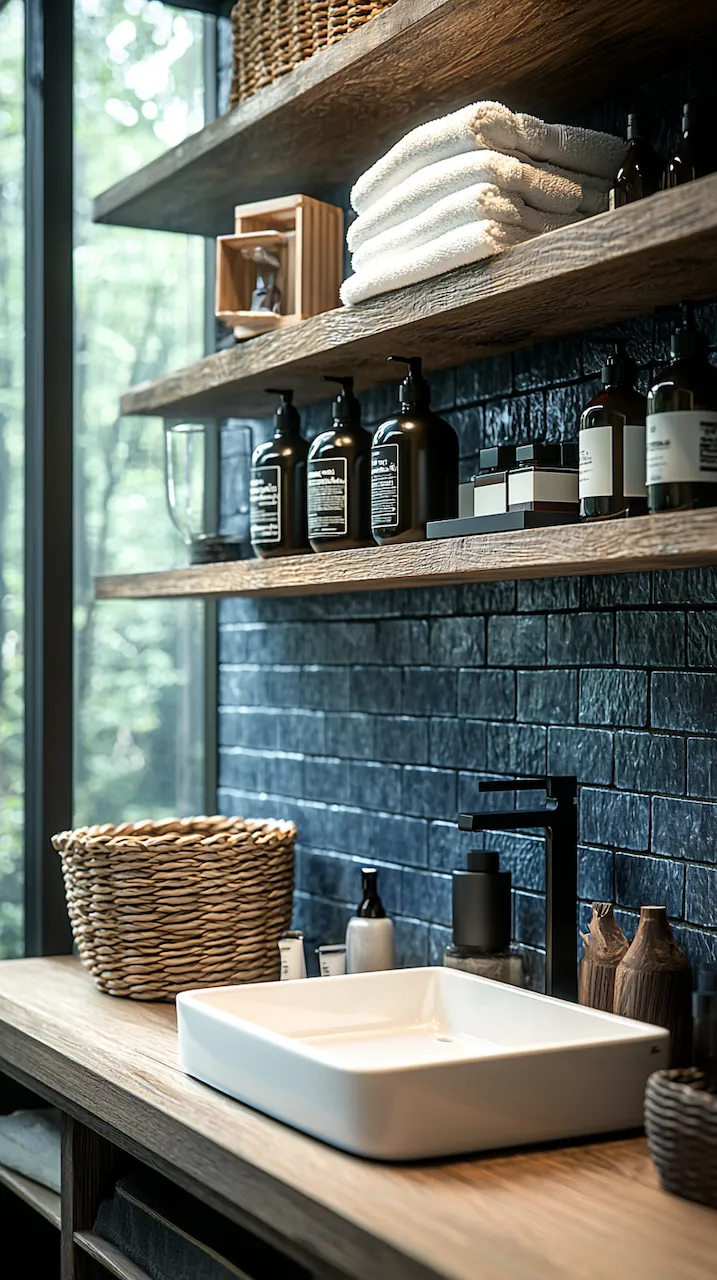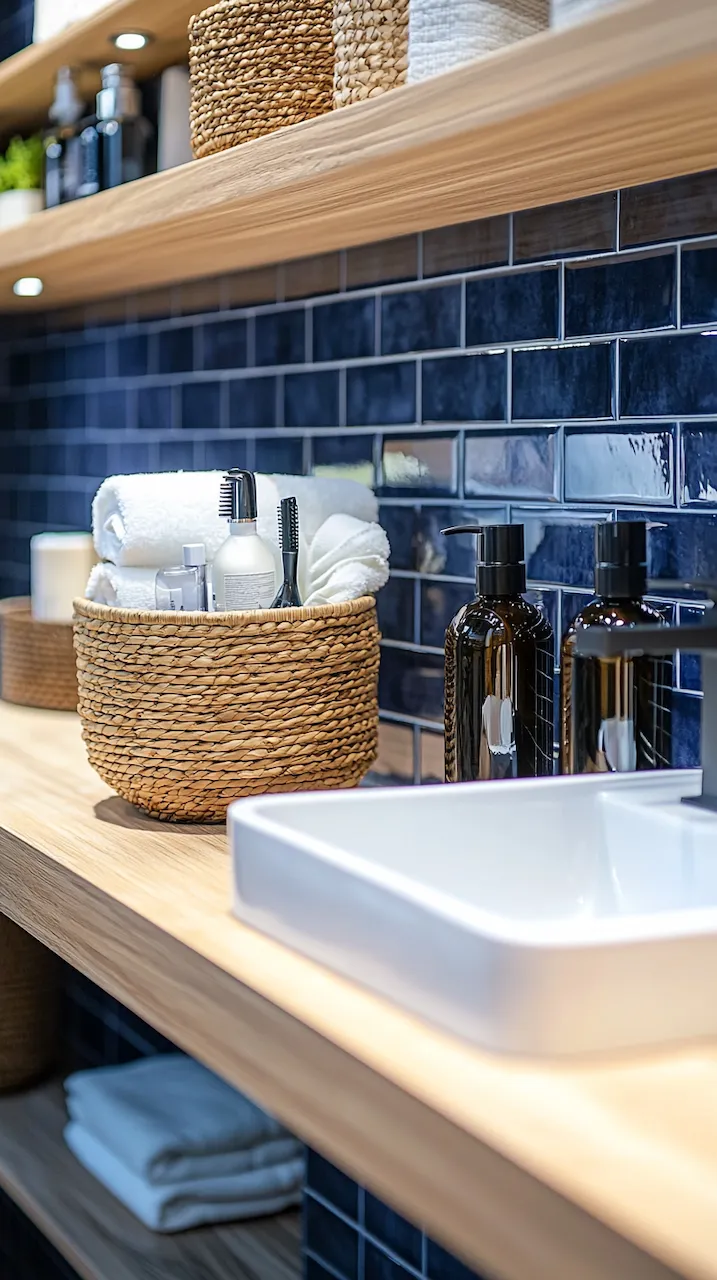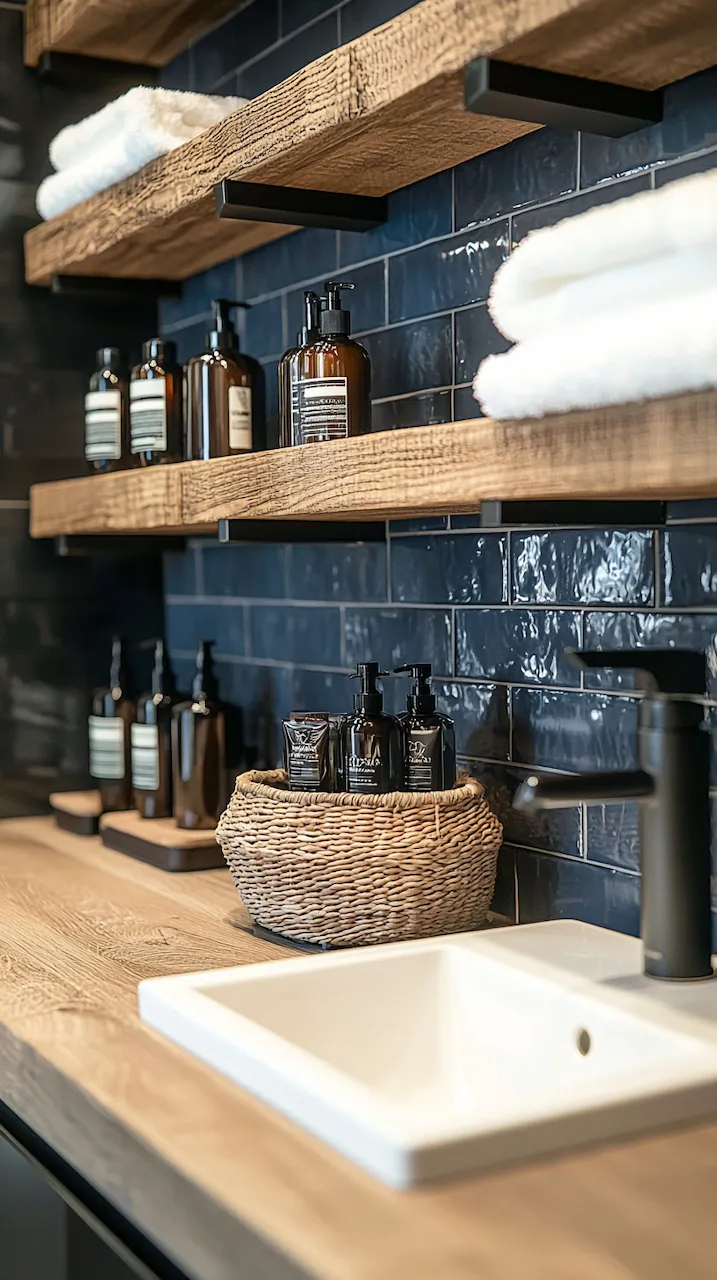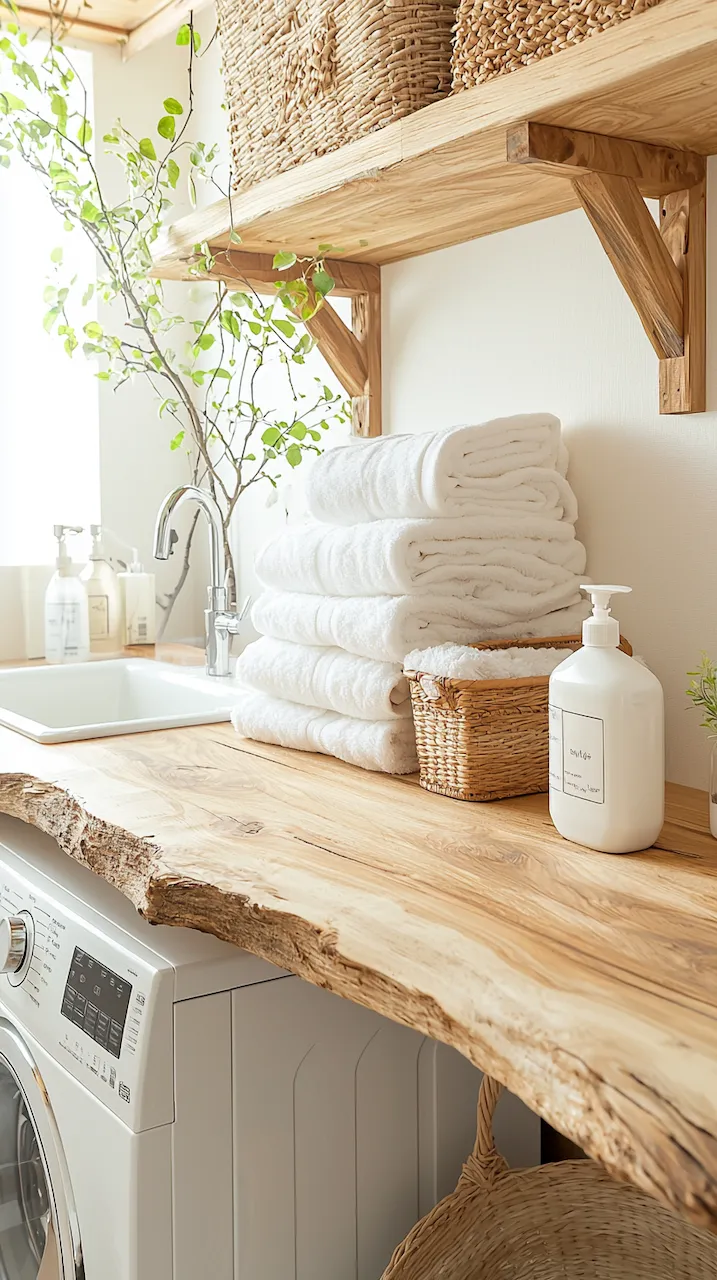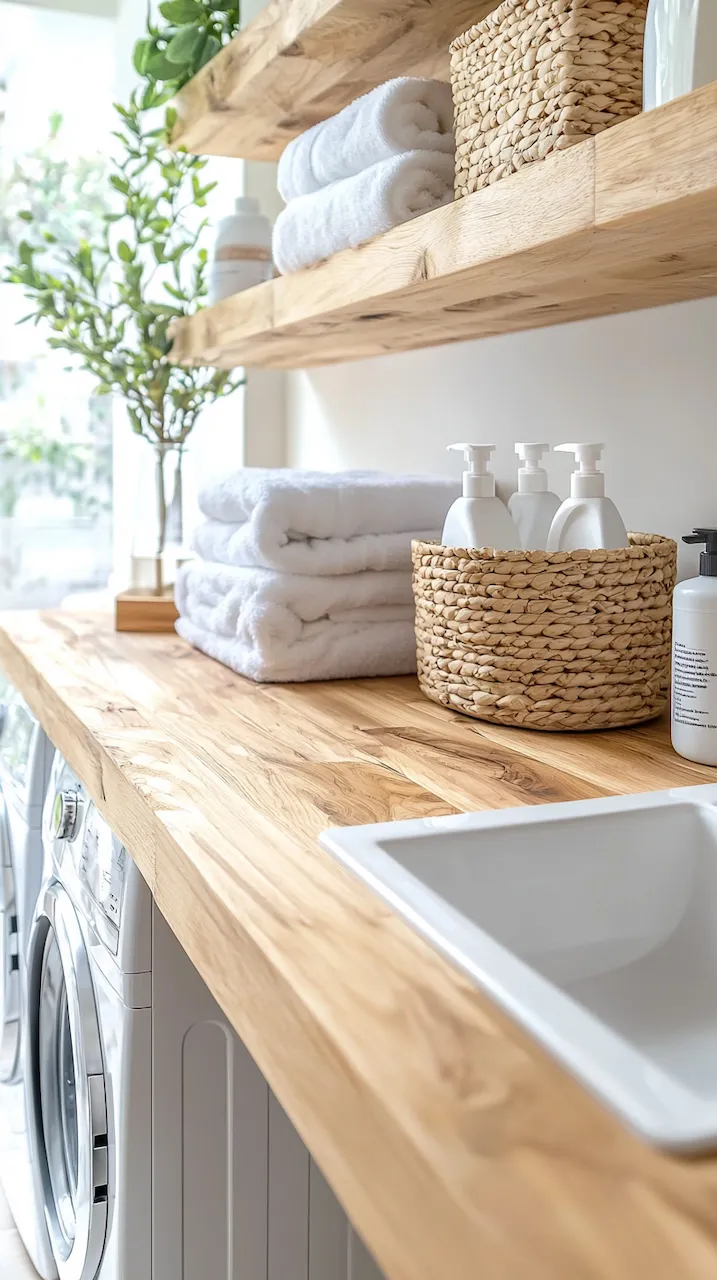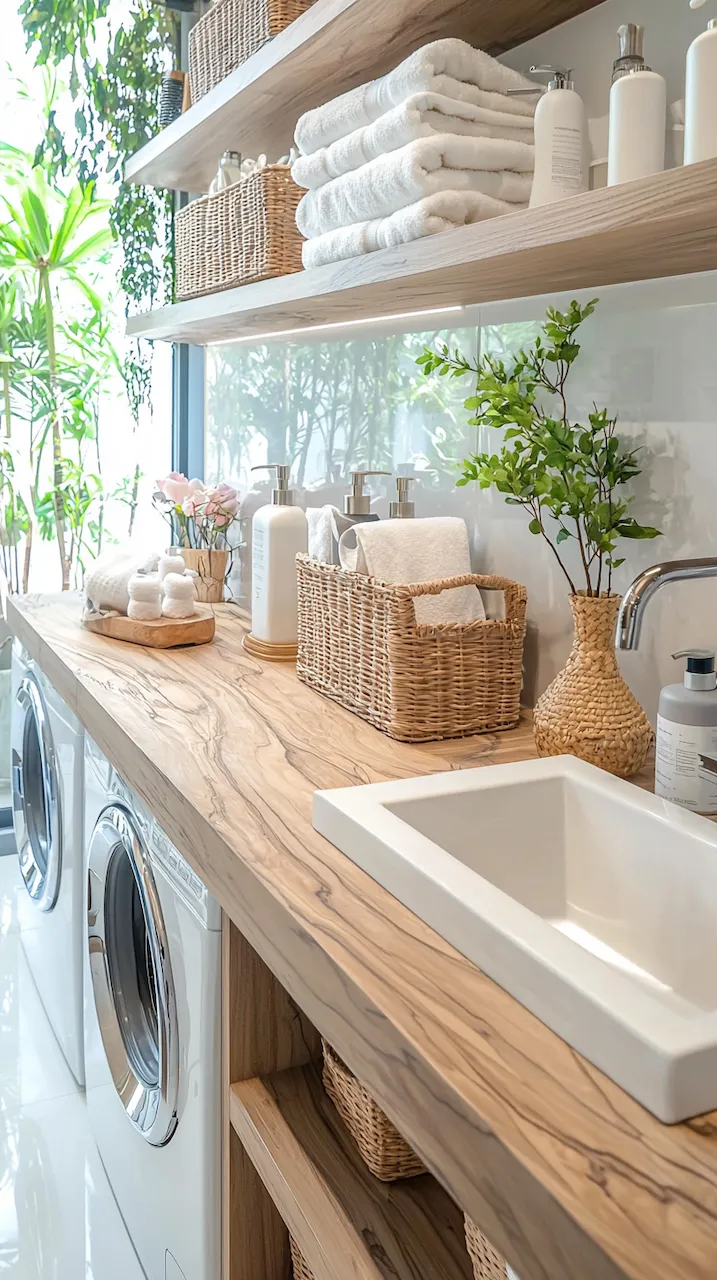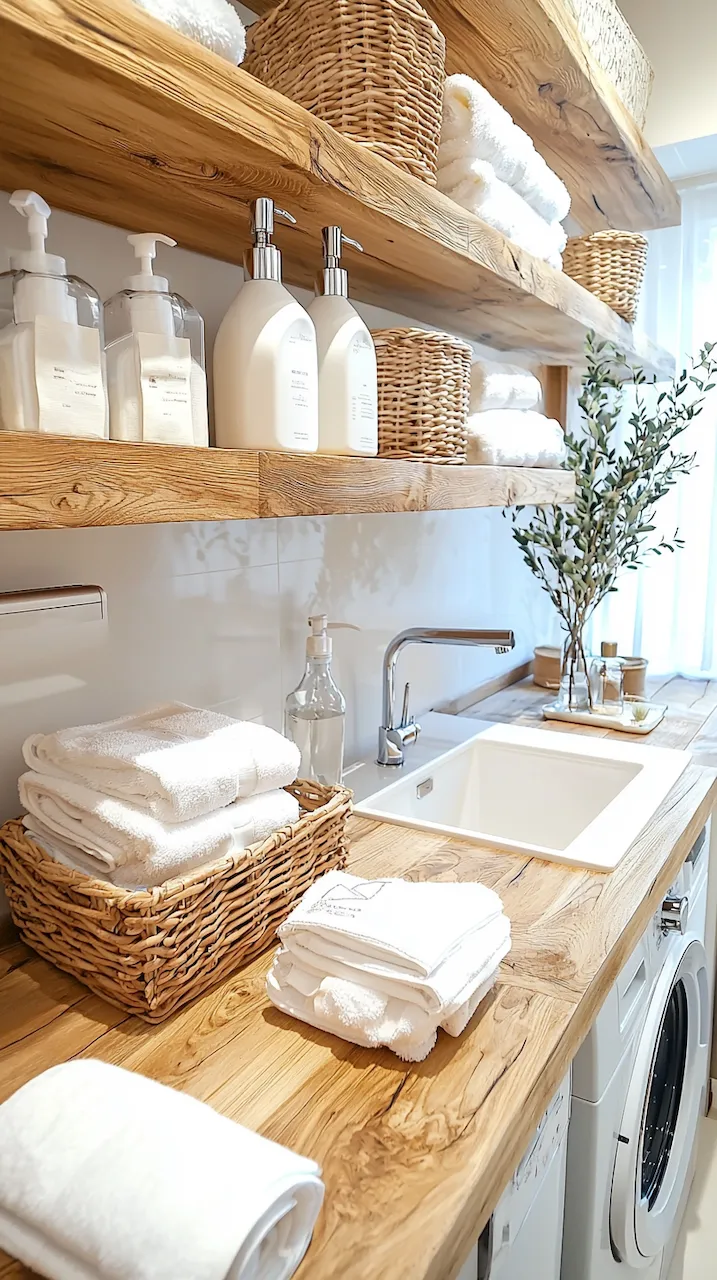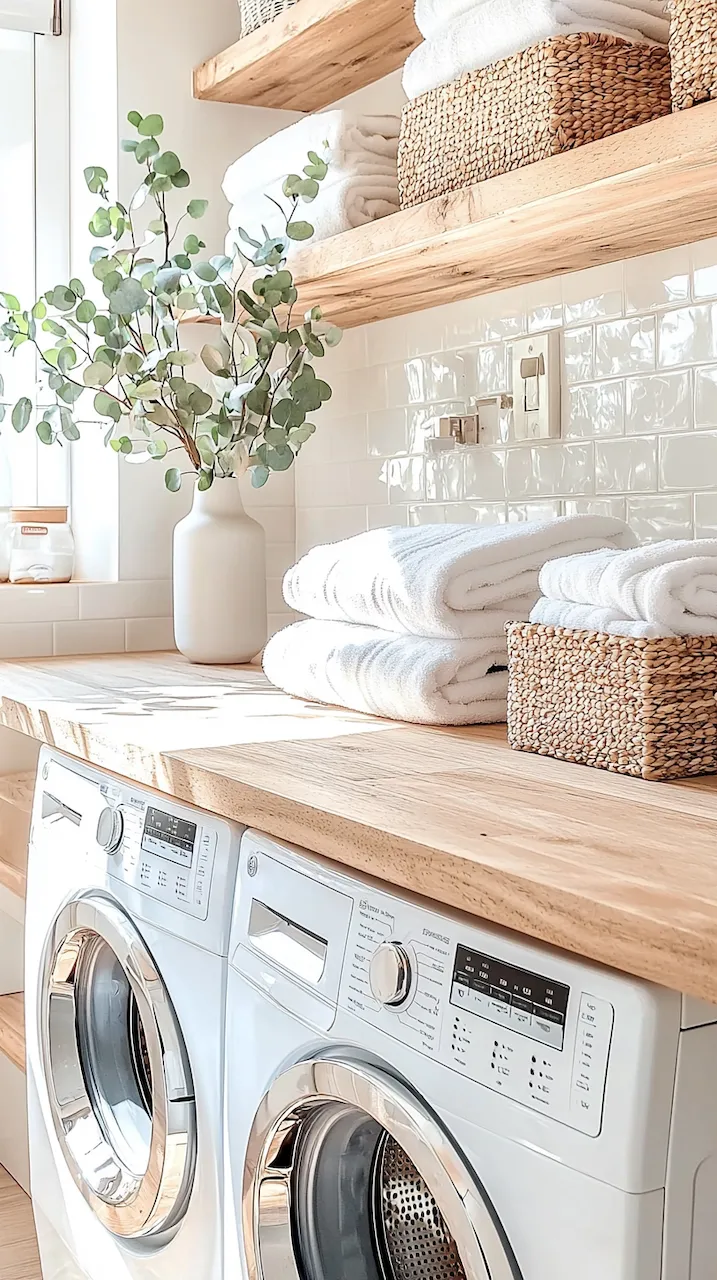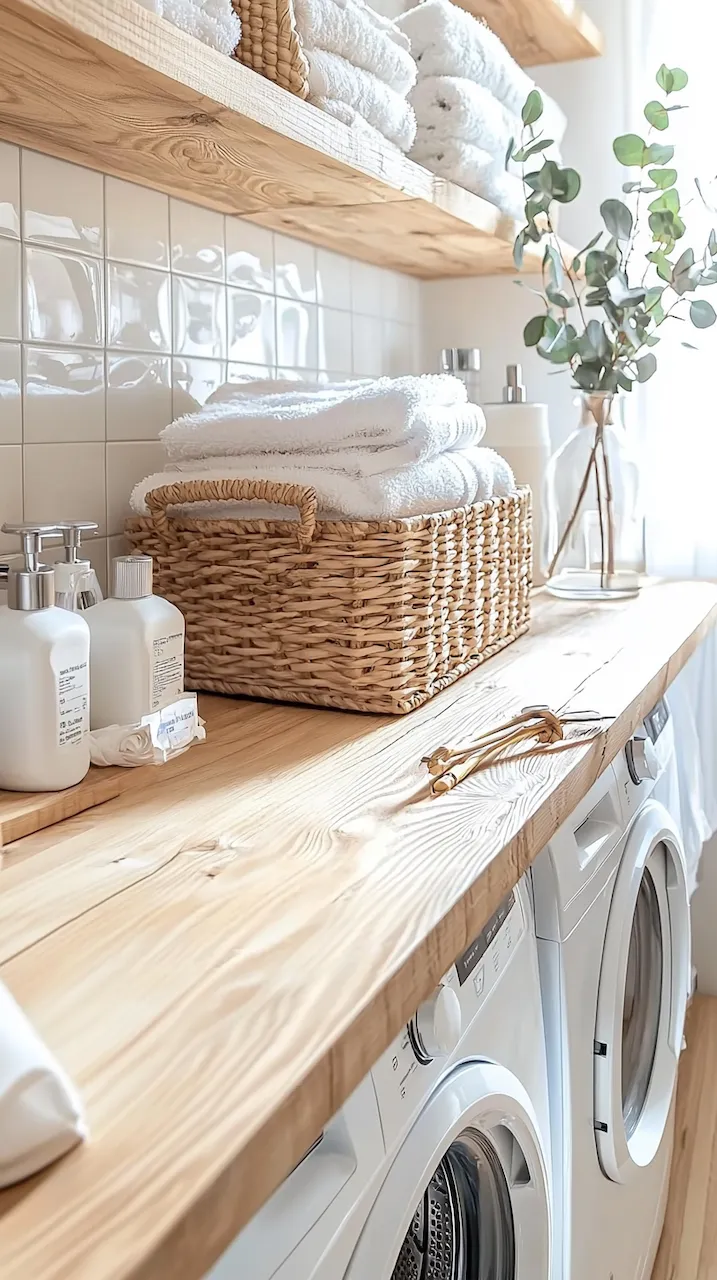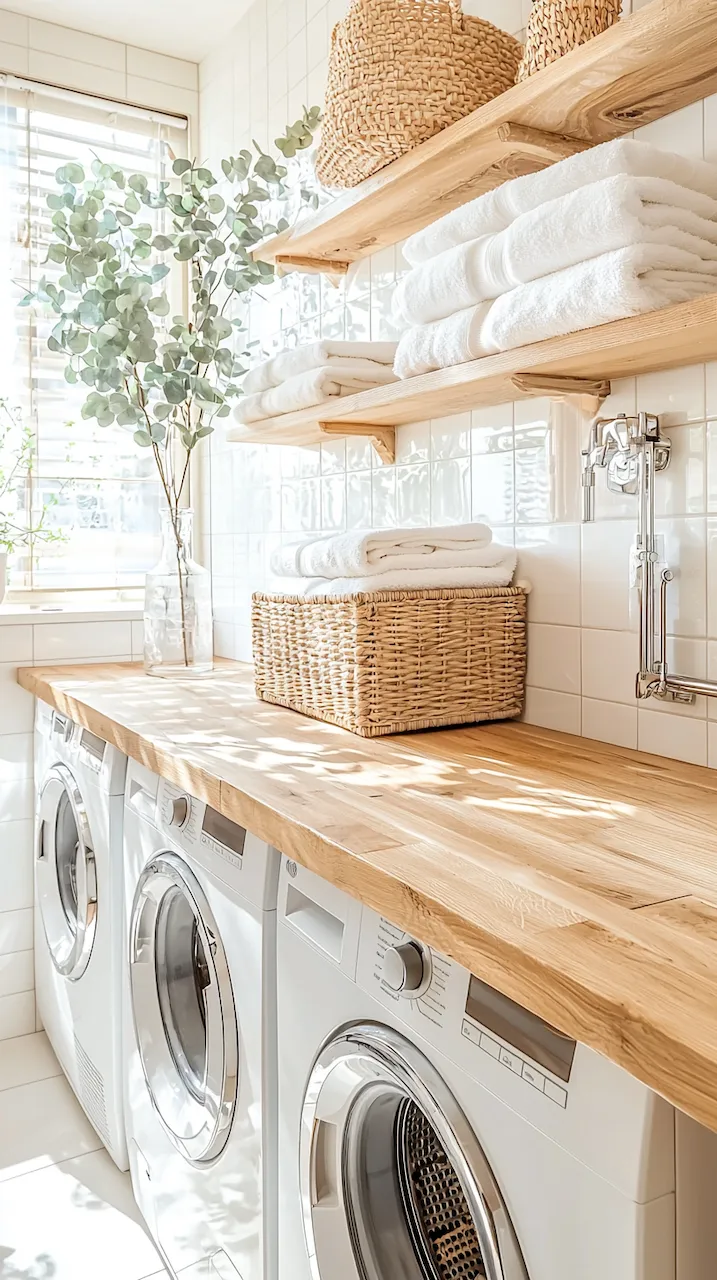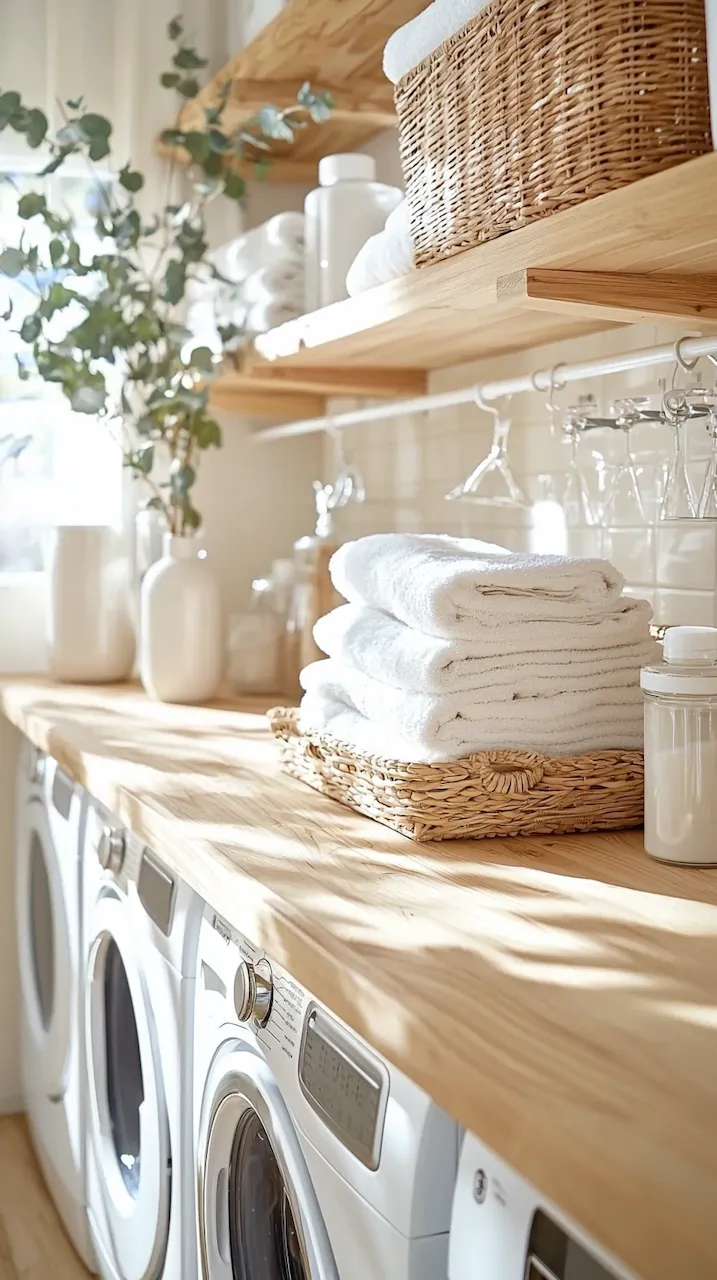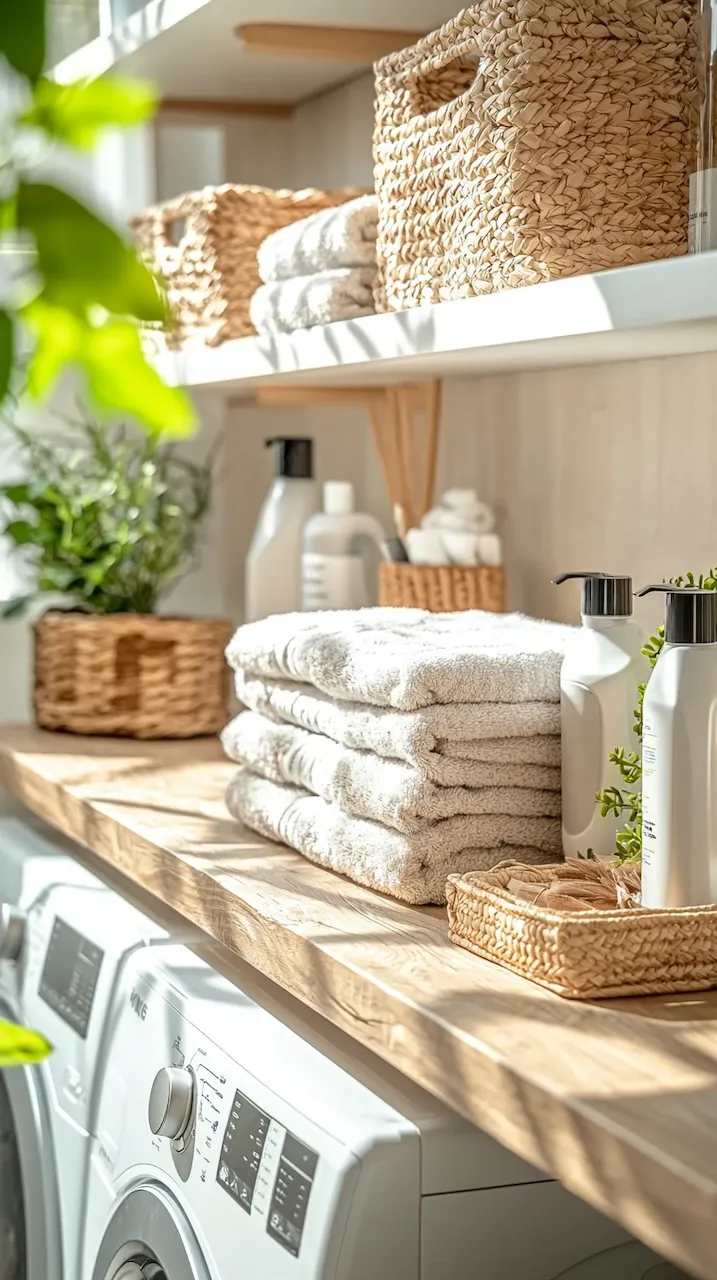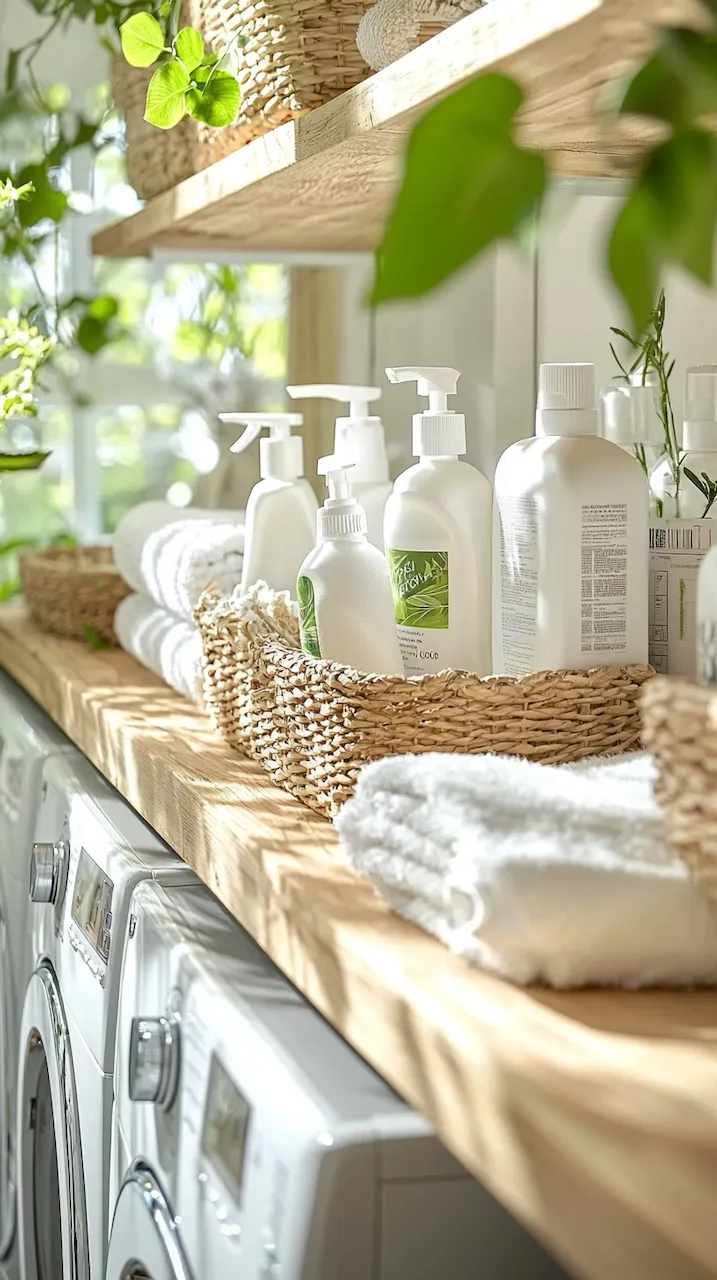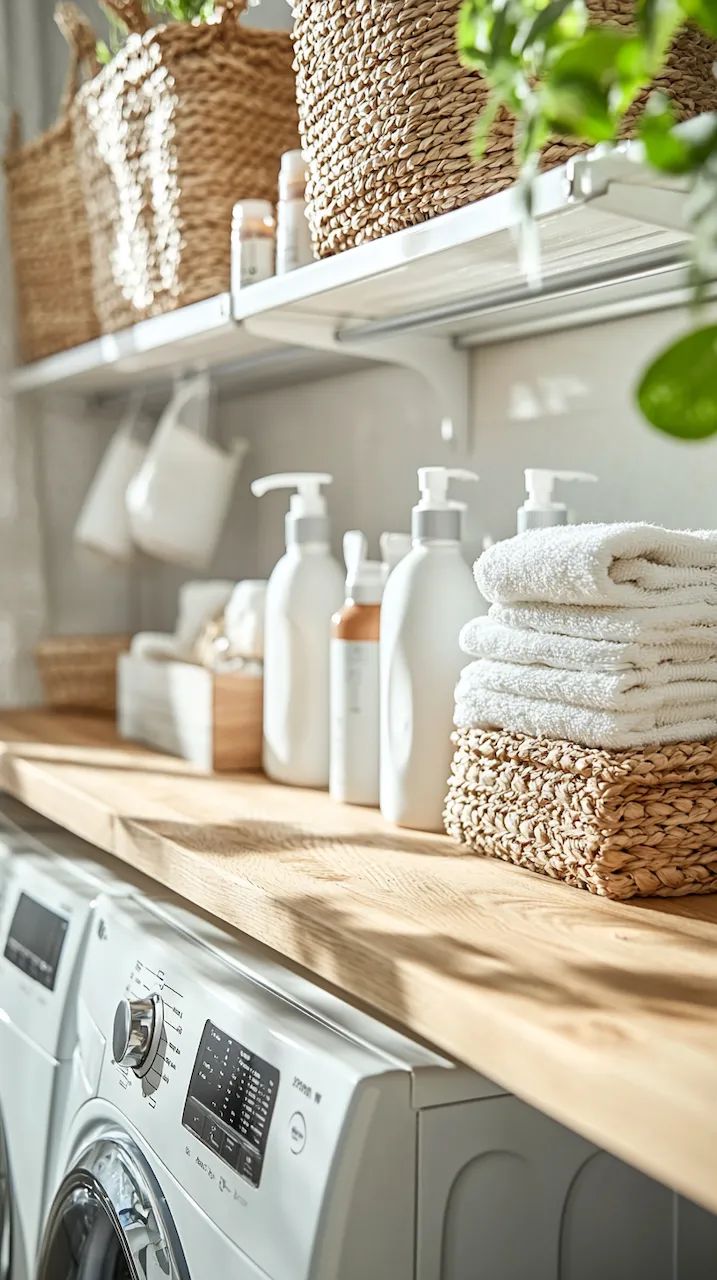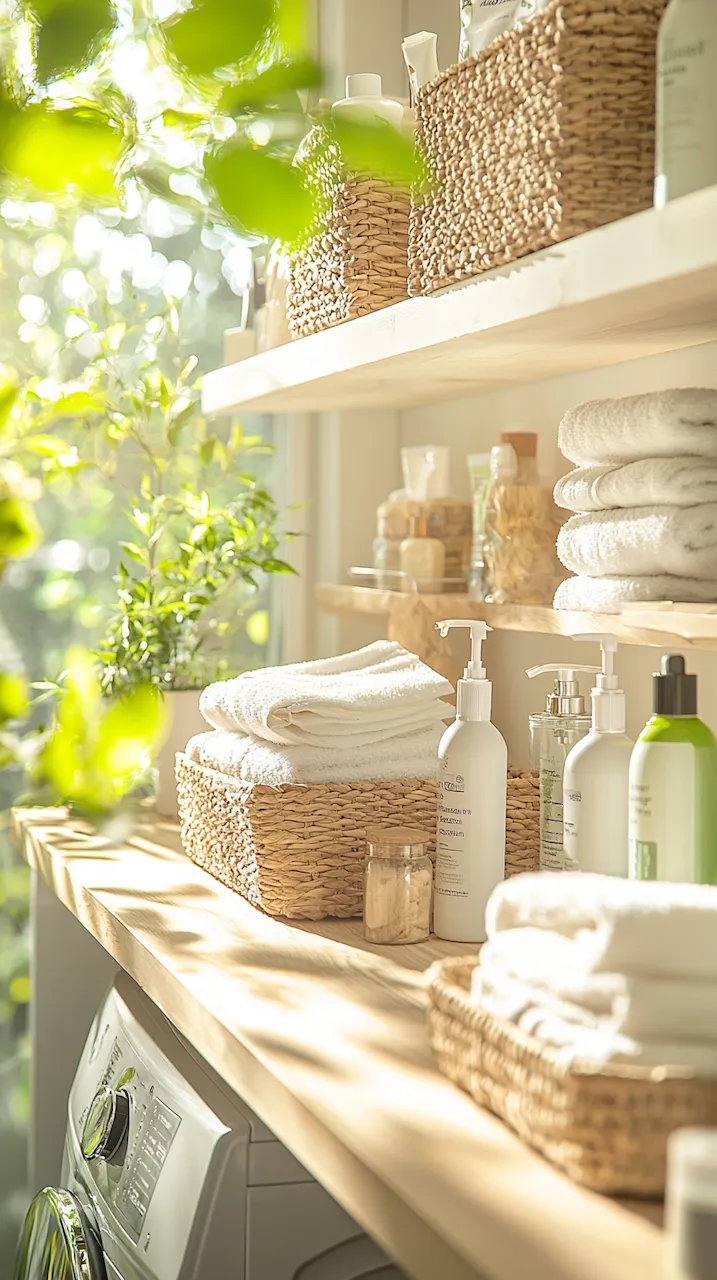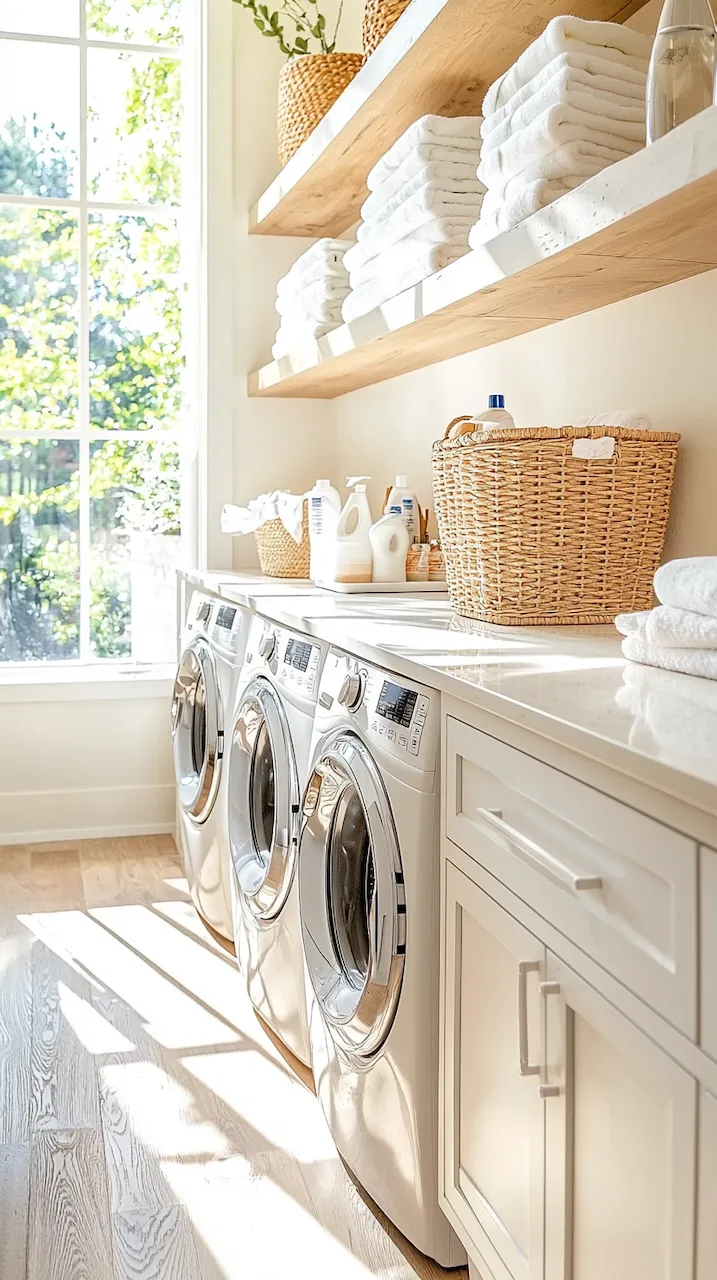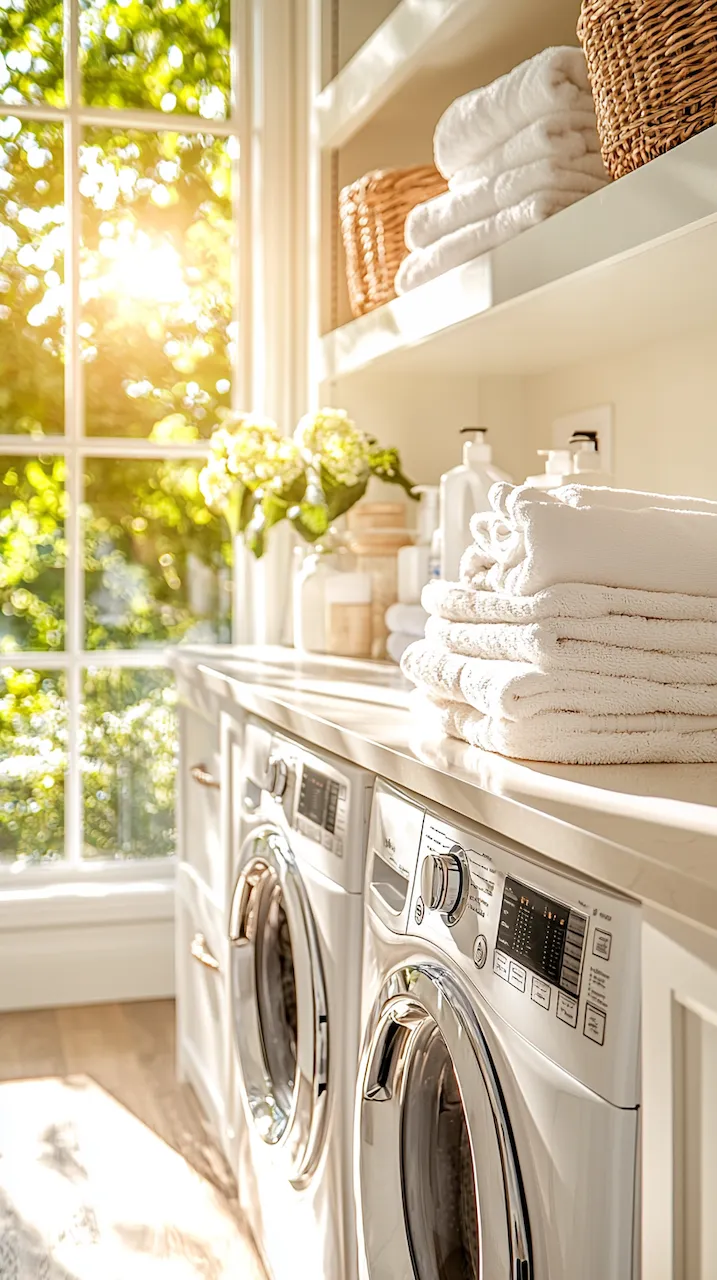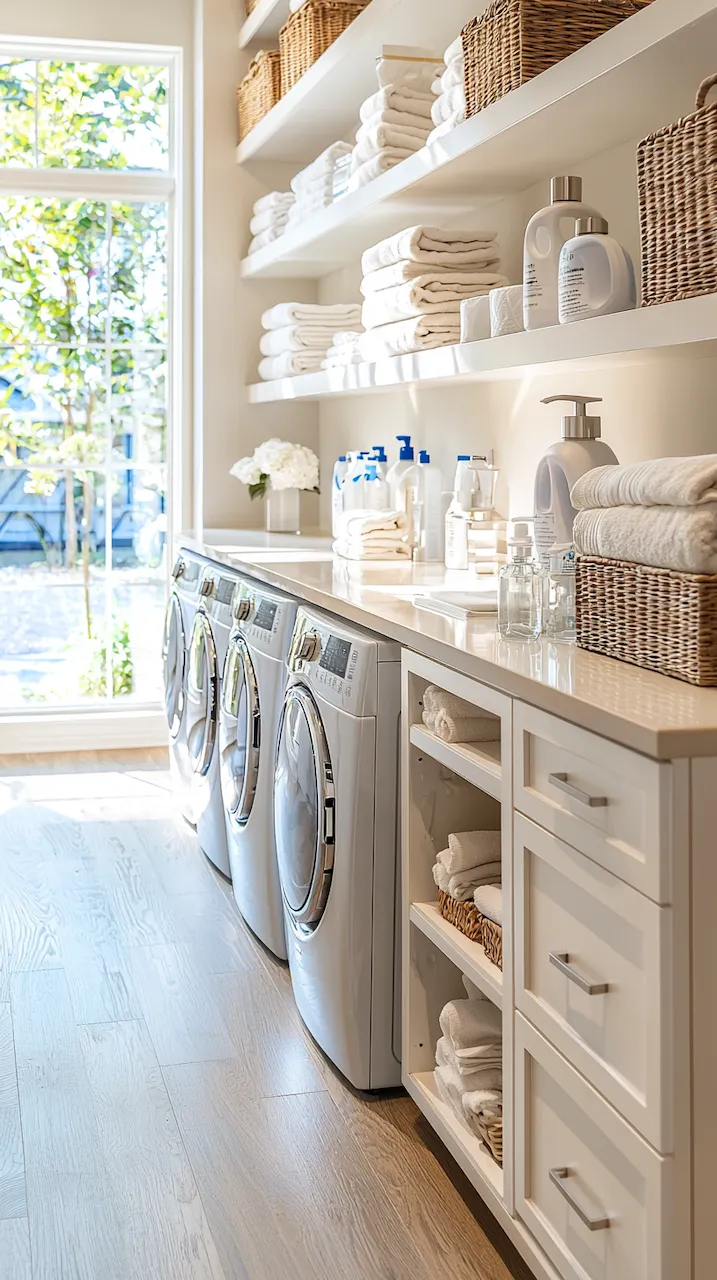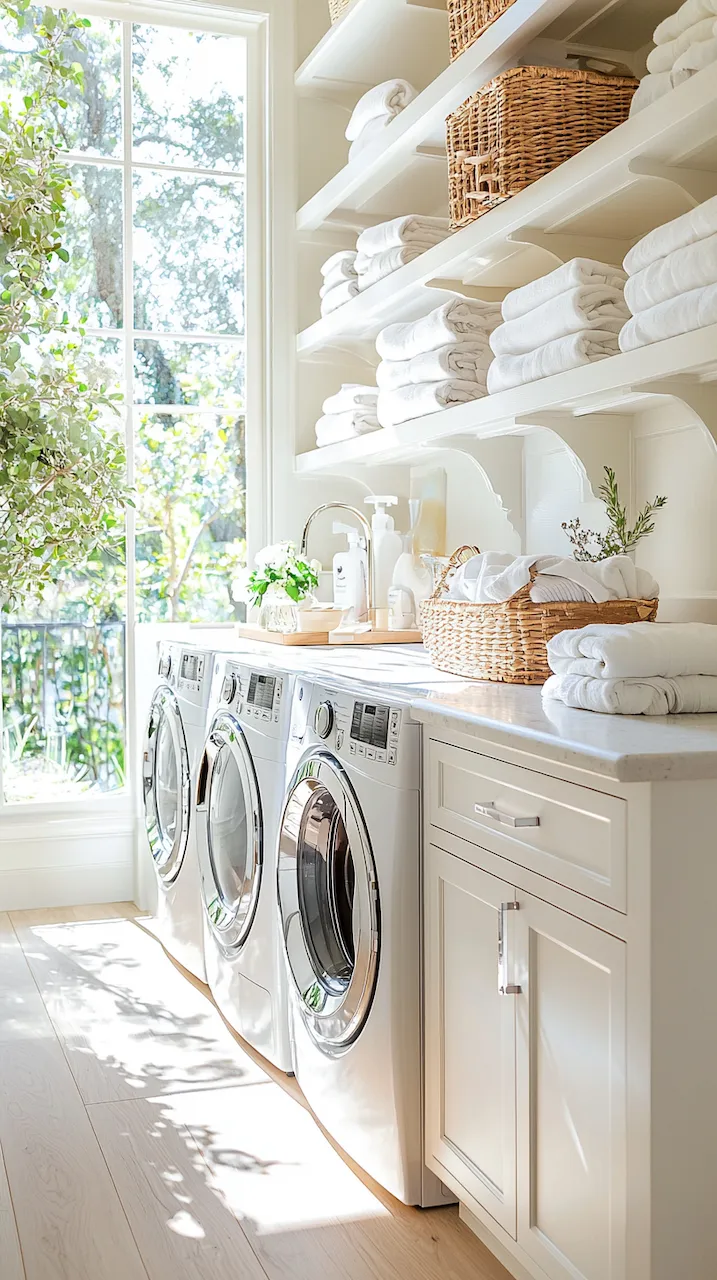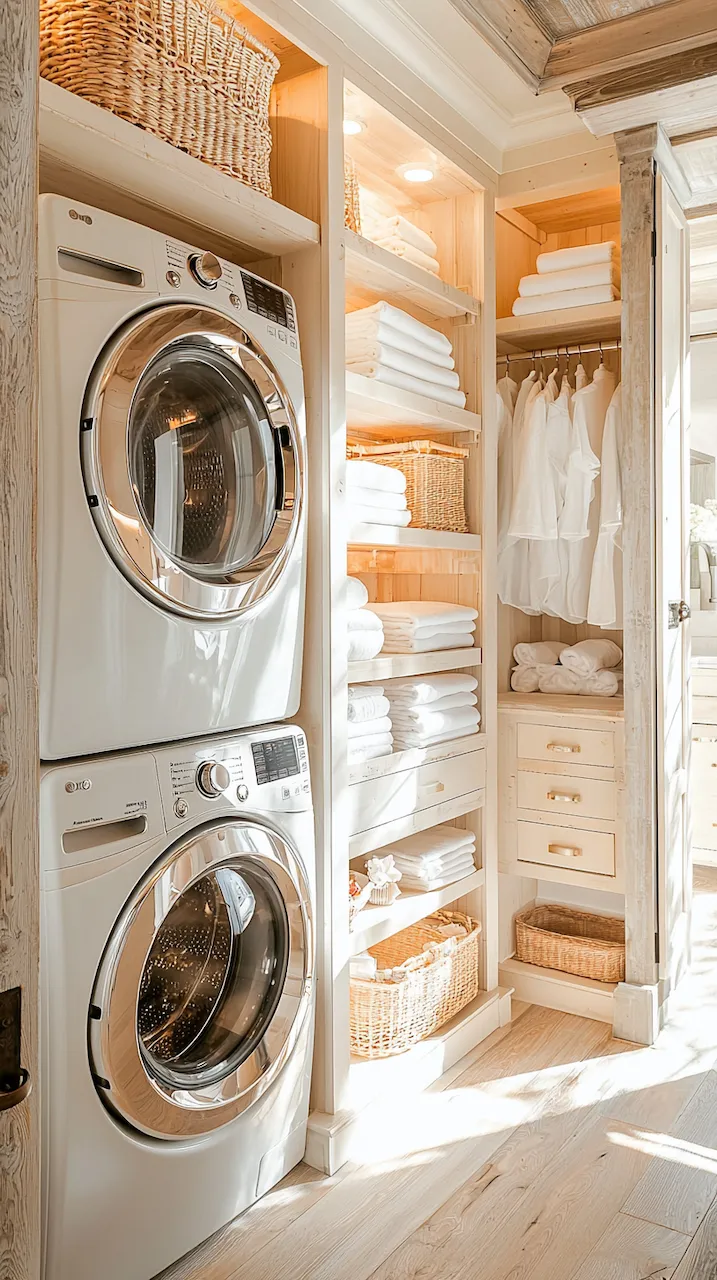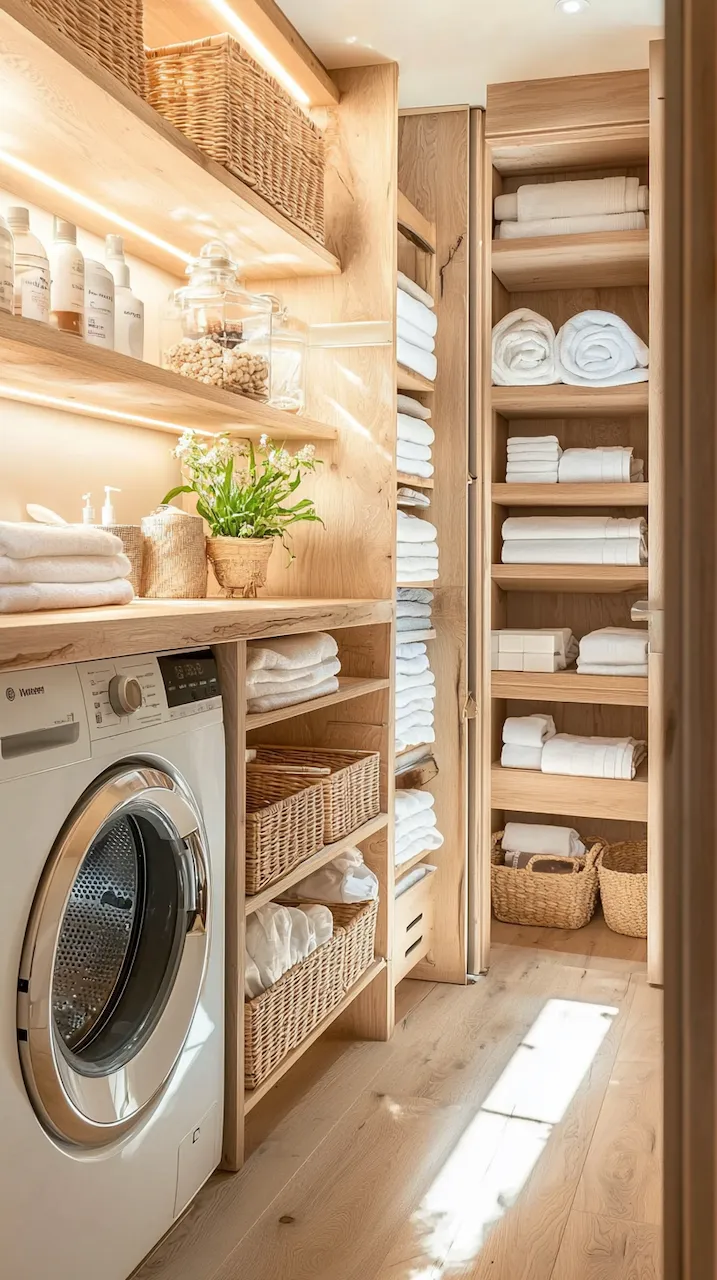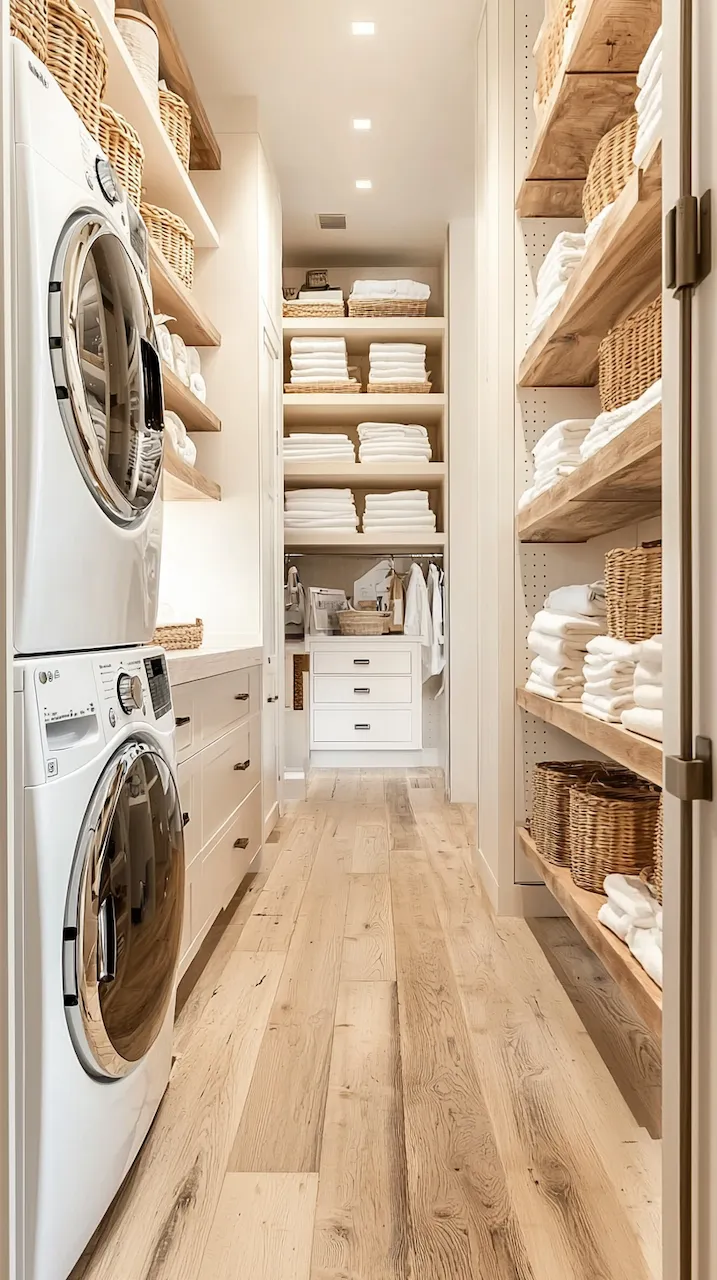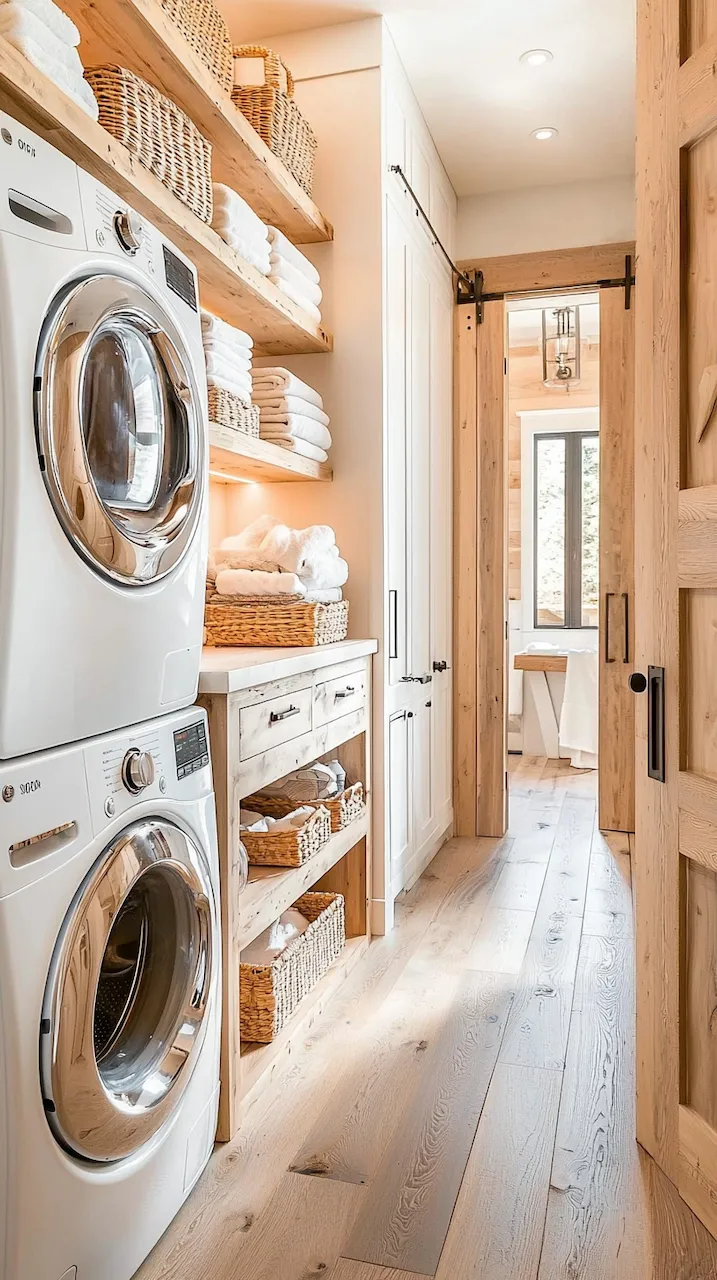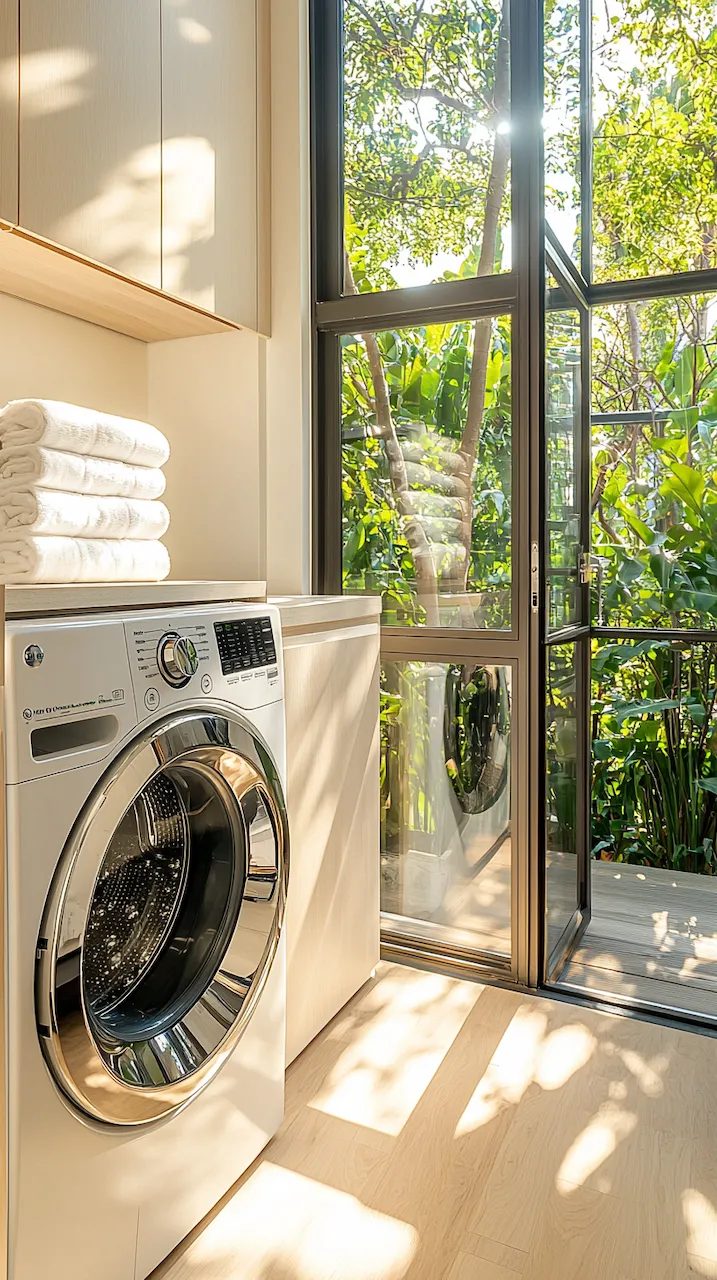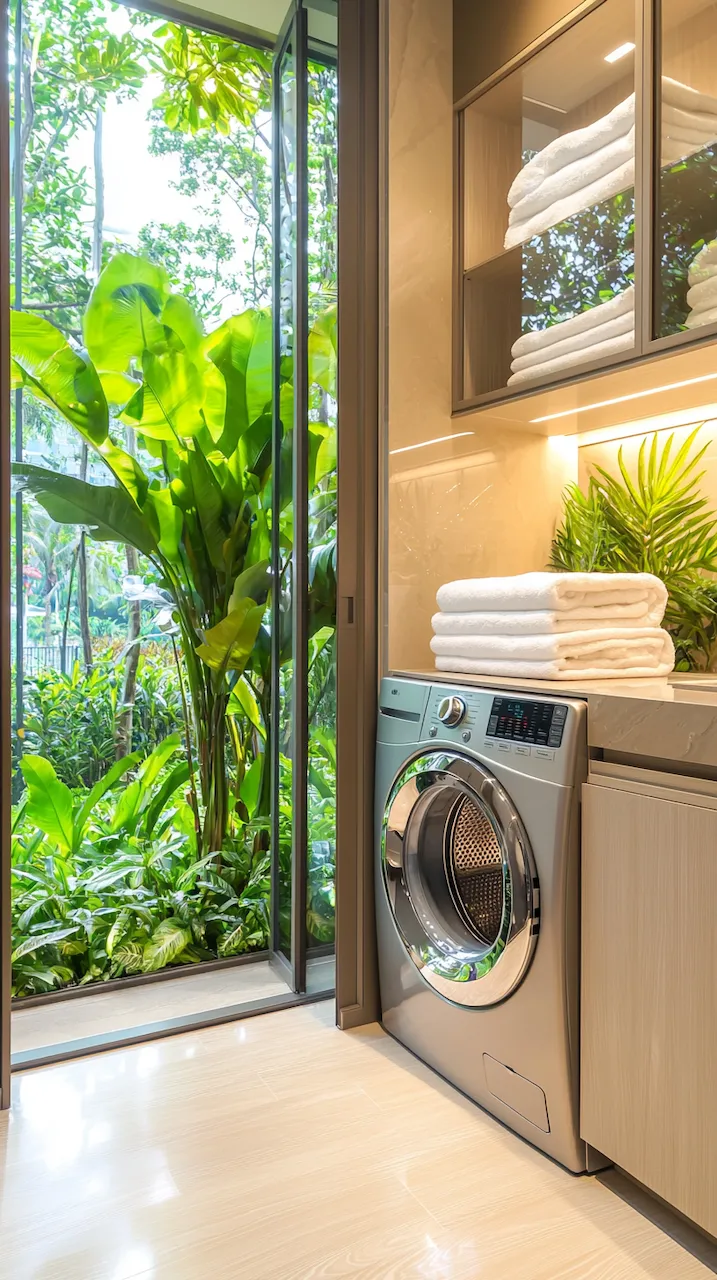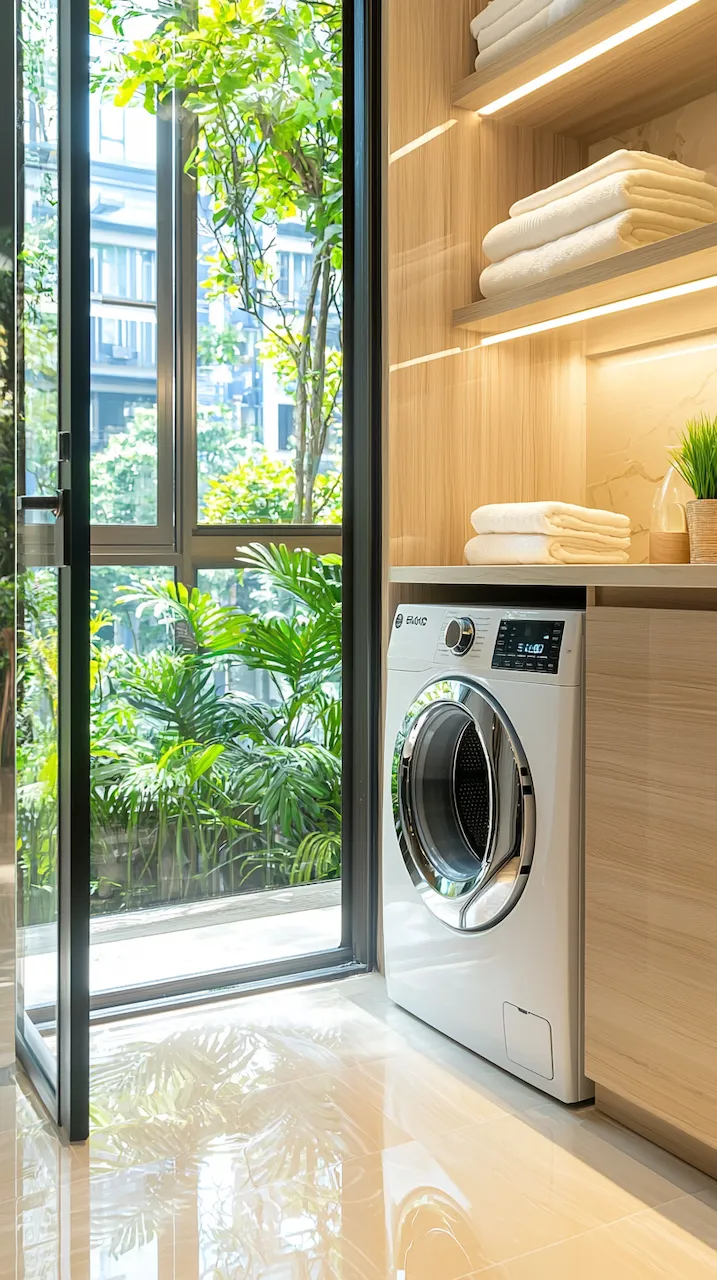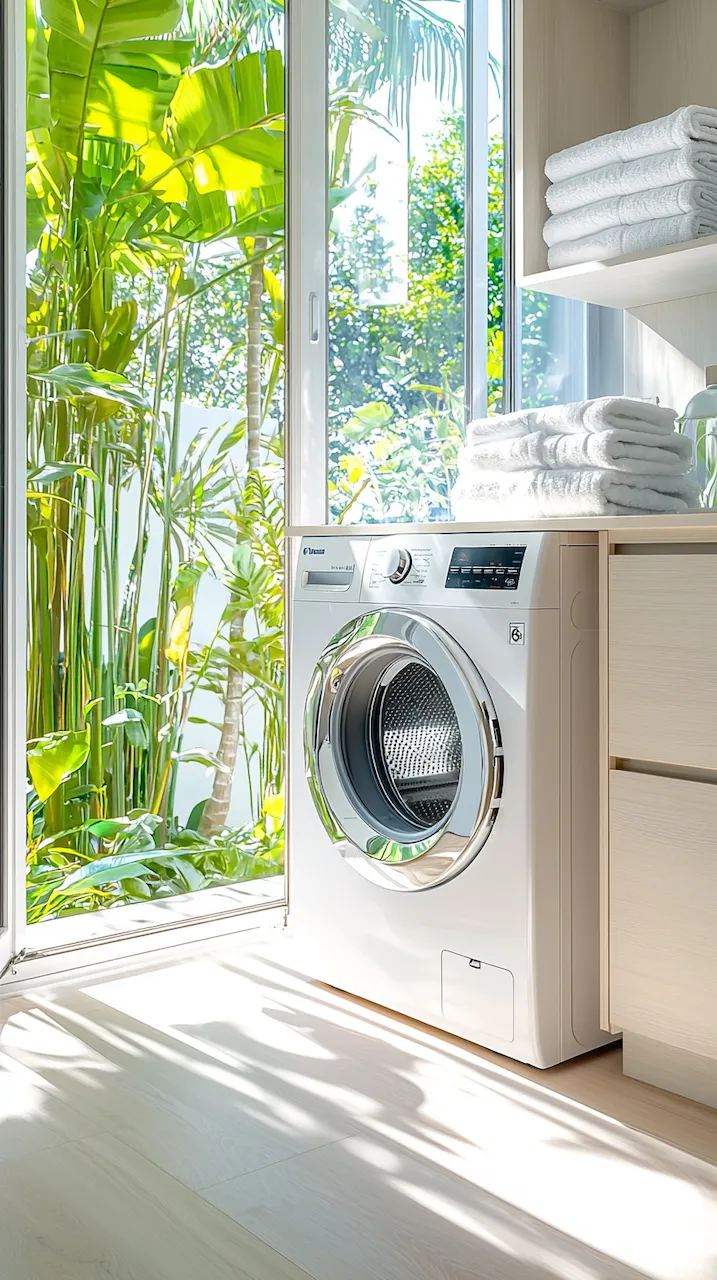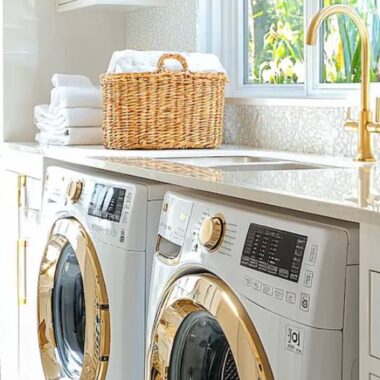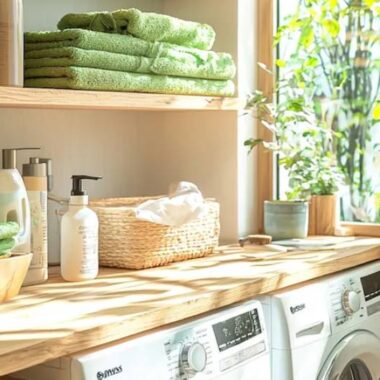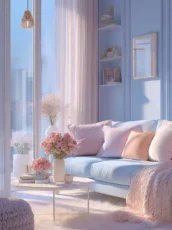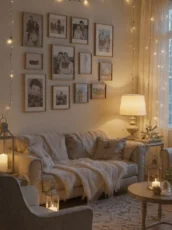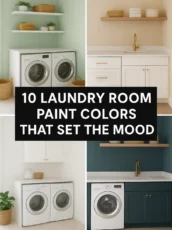In the age of curated living, where espresso machines are sculptural and gallery walls whisper of travels, triumphs, and TikTok trends, the humble laundry room is having its comeback. No longer a forgotten nook behind a door you pretend doesn’t exist, the small laundry room is being reimagined — not just as a place to wash clothes, but as a tiny thesis on the life you want to live. Design, after all, isn’t just aesthetics. It’s intention made physical. And in spaces this small, every hinge, hook, and handle speaks volumes.
Let’s get one thing straight: this isn’t about hiding the mess. It’s about reframing it. Welcome to the Organization Oasis — where structure meets story, form follows feeling, and even your detergent earns its place in the narrative.
Statement Meets Structure
In a small space, every square inch should work like a triple threat: functional, beautiful, and surprising. That floating walnut shelf? It’s holding stain remover and framed art. Those high-gloss lacquer cabinets in oxblood red? They conceal the detergent but act like a fashion editorial.
High-contrast palettes — matte black fixtures against brushed brass, creamy walls that make forest green cabinets glow — create architectural rhythm without crowding the room. Vertical real estate is king here. Think built-in open shelving that doubles as a design moment, displaying handmade ceramics, stacked linen in tonal folds, or vintage utility objects that wink with nostalgia.
Storage doesn’t just solve problems; it sets the tone. Sliding barn doors with smoked glass inserts give drama and discretion. A custom pegboard in Baltic birch says “I care” with Scandinavian sincerity. This is form meeting function at a cocktail party, dressed to impress.
The Power of Asymmetry
Forget the tyranny of symmetry. In compact quarters, imbalance is intrigue. An offset brass sconce perched above a folding counter casts cinematic shadows. A single large format print — maybe a black-and-white shot of Milanese laundry lines — anchors the space with asymmetrical poetry.
Try staggering open shelves so that the eye moves — left to right, top to bottom — like visual jazz. Place a stool in velvet chartreuse that breaks the line of sight and invites a pause. Why? Because surprise is a form of luxury. And luxury, in the new design vernacular, is personalization — not perfection.
When spatial limitations threaten to flatten creativity, asymmetry lets the room breathe with character. It’s the visual equivalent of a cuffed pant leg or an undone top button: deliberate, stylish, confident.
Materials That Talk Back
Small laundry rooms benefit from bold materials that carry their own stories. Terrazzo counters nod to Italian ateliers. Polished concrete floors offer a cool, industrial backbone to warm wood accents. Ribbed glass cabinet fronts play with distortion and reflection — concealing chaos with charm.
Velvet might seem indulgent for a laundry room — which is exactly why it works. A plush stool or upholstered bench turns a functional space into a tactile experience. Lacquered woods reflect light and lift the mood. Even your choice of baskets — leather-handled wire, handwoven seagrass — adds textural nuance.
This isn’t about flexing. It’s about fluency. A room that speaks in a dialect of intentional contrasts: smooth and rough, gloss and matte, old and new. Materials that push back against cliché and ask better questions about how we live.
Design With a Thesis
Behind every beautifully organized laundry nook lies a point of view. Maybe it’s “vintage utility with Bauhaus edge.” Maybe it’s “Tokyo meets Copenhagen in 45 square feet.” The best interiors — especially the small ones — have a thesis. They aren’t just decorated; they’re argued, edited, and refined.
Think: a single row of art that tells a color story across decades. Or a custom wall-mounted drying rack that collapses like origami — a tiny nod to design intelligence. Even color blocking on the walls (half sage green, half crisp white) can communicate a design manifesto: clarity meets calm.
And let’s not forget lighting — the punctuation marks of a room’s voice. A directional spotlight to highlight a stack of folded towels like a sculpture. LED strips under a shelf to make the backsplash glow like an exhibit. Light, when used well, is not just illumination. It’s storytelling.
Your Home Is Your Essay
Ultimately, transforming a small laundry room into a sanctuary of style isn’t about more stuff. It’s about sharper choices. It’s the creative act of saying: I see beauty in the everyday, and I deserve to experience it — even while folding towels.
Think of your home as a personal essay — a space that argues for your values, aesthetic, history, and future. Whether it’s a lacquered cabinet, a sculptural light, or a shelf that holds both bleach and a Basquiat print, your space is your voice.
So go ahead: design with intention. Organize with poetry. And never underestimate the emotional power of a well-folded linen in a room that knows who it is.
After all, in small spaces, we don’t just make do — we make statements.
